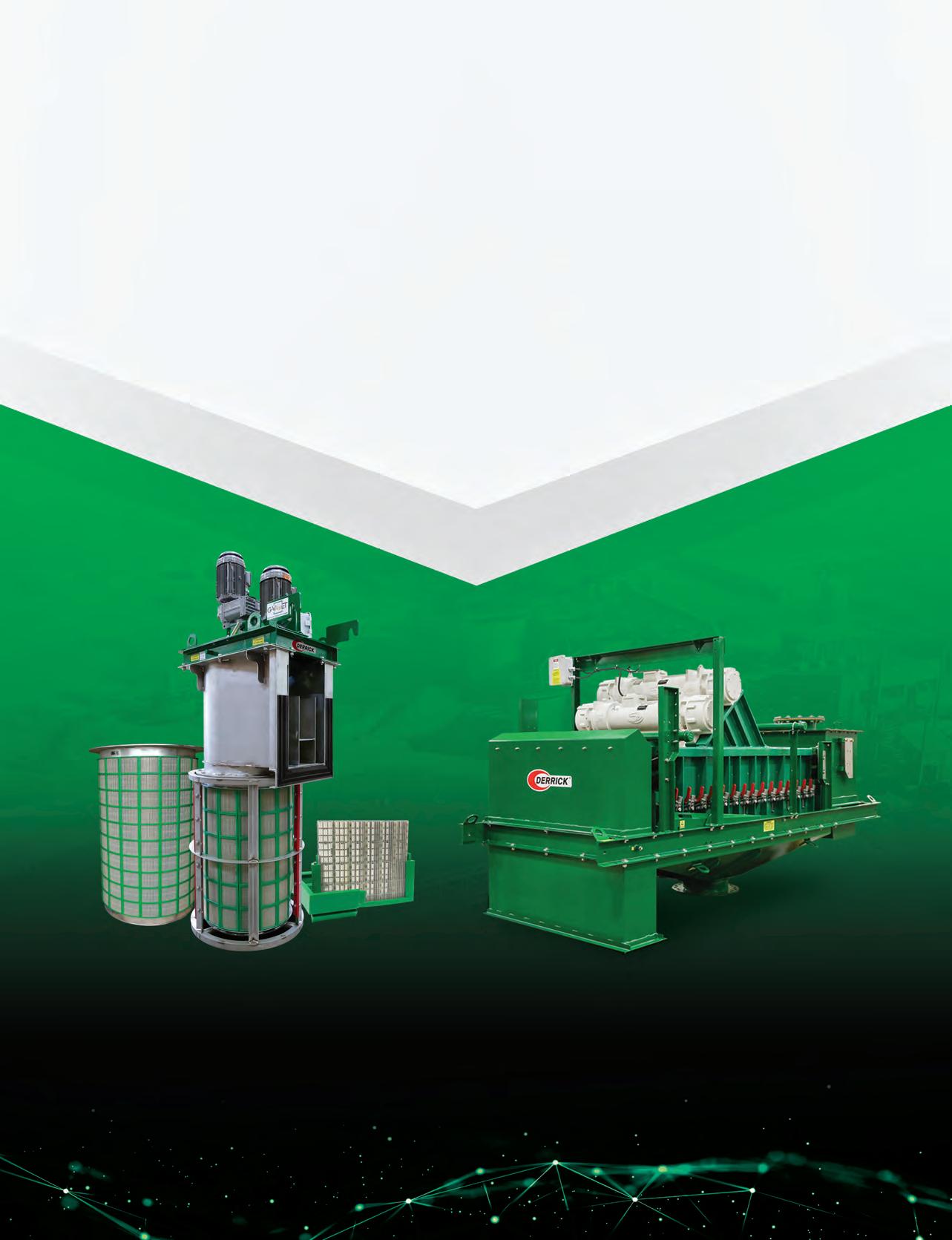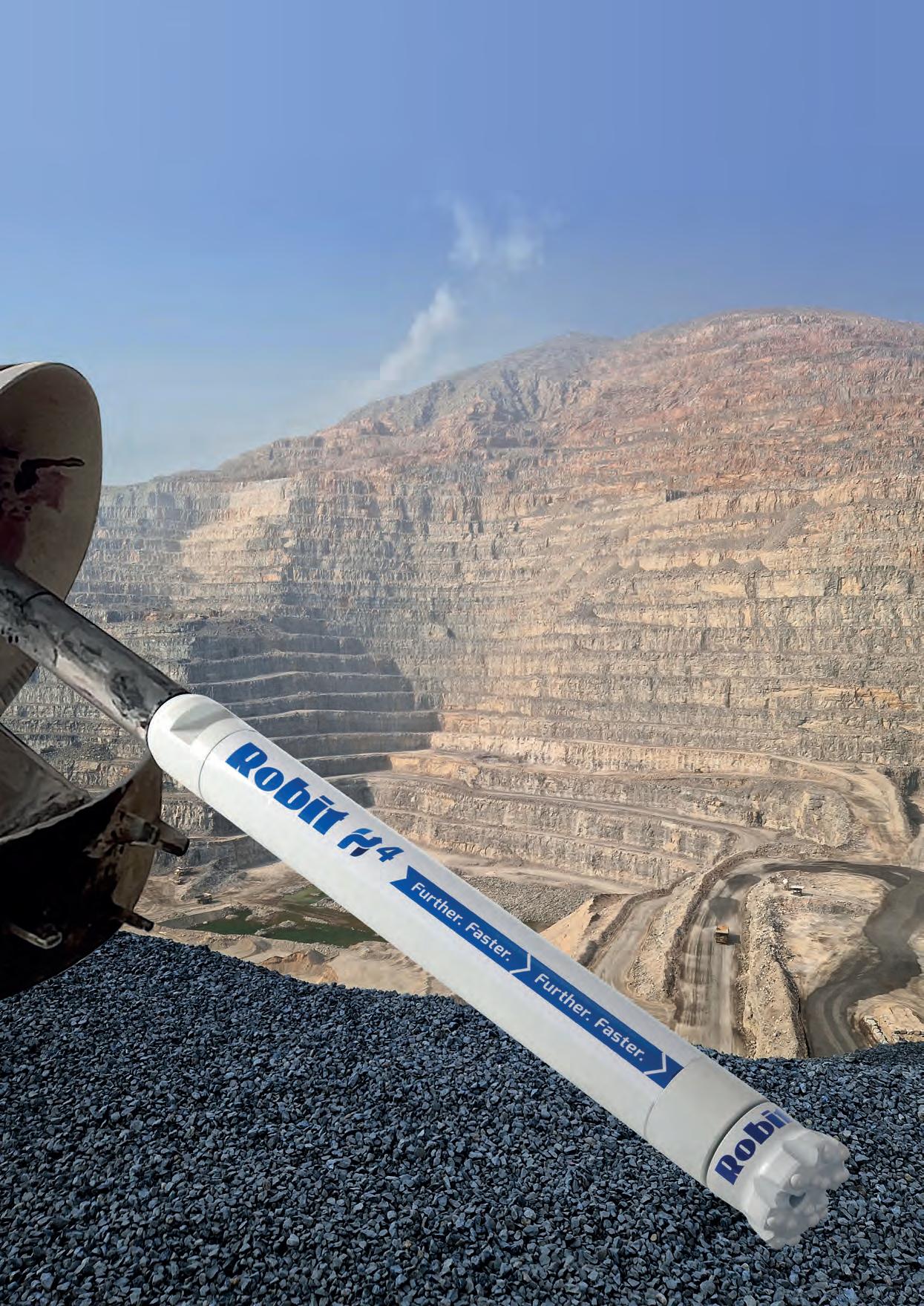

85 YEARS OF SOLUTIONS.
Since 1937, Fletcher has been answering some of underground mining’s toughest questions. At Fletcher we provide more than solutions, we provide an atmosphere for an open dialogue with customers to ensure their operations are reaching maximum efficiency. Fletcher provides lifetime support through an experienced, knowledgable team of sales staff, engineers and field service technicans. Is your operation facing obstacles that mass produced equipment isn’t addressing? Get your custom solution started today. Learn more at www.jhfletcher.com
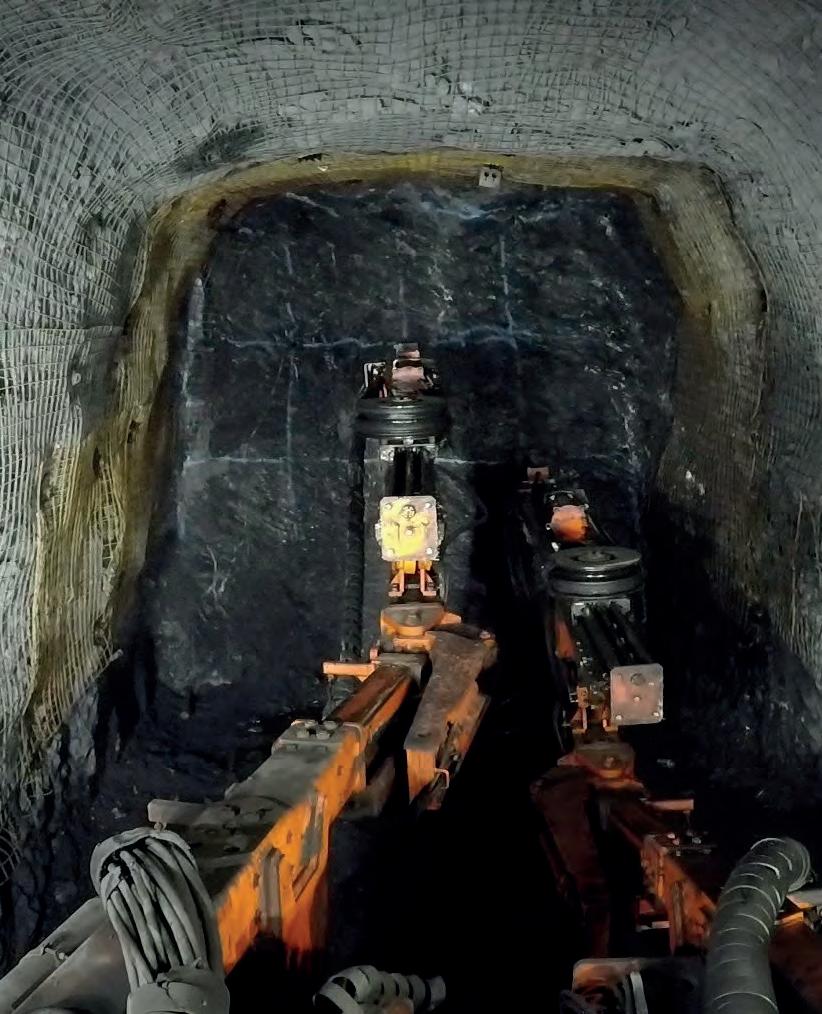
CONTENTS
08
Jorge Uzcategui and Kirill Kirilenko, CRU, UK, look at some of the key trends defining the gold mining industry’s mid-term profile and production levels.
14
Product Development Through Collaboration

Perttu Aho, Robit, Finland, highlights the importance of collaboration with customers and partners when designing new products – bearing in mind that no two work sites are the same.
22 Six Reasons Why An Open Ecosystem Is The Future Of Mining
Greg Lanz and Simon van Wegen, Komatsu, USA, outline the need for greater collaboration in the mining industry and the potential advancements an open ecosystem approach could bring about.


27 Maximising Flotation
Eric Wasmund, Eriez Canada, Jose Concha, Eriez Peru, and Homie Thanasekaran, Eriez Australia, examine how innovations in cell technology can help maximise mineral recovery from froth flotation – resulting in more profitable and sustainable projects.
31 Something To Bear In Mind
Jason Ludwig, Regal Rexnord, USA, reviews several examples of how significant savings were generated by selecting the right type of bearing.
33 A Solar Hybrid Solution
Alistair Jessop, Vivo Energy, South Africa, discusses the potential for renewable energy in Africa’s mining sector and how solar hybrid solutions can help the industry become more sustainable.
36 Sorting The Best From The Rest
Jordan Rutledge, TOMRA, Australia, evaluates the emerging role of sensor-based particle sorting in the race to electrify vehicles.
41 Foam To Improve Safety
18 Stay Ahead Of The Storm
Martin Adam, Orica, Australia, explains how wireless blasting technology can reclaim hundreds of production hours at risk of being lost during storm seasons.
Anthony Ferrenbach, Weber Mining & Tunnelling, Mexico, details how cavity filling with foam product can be safer than using other methods and delves into a case study where foam filling was used to great effect.
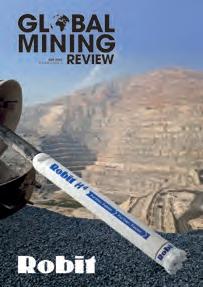
45 A Surface Mining Mission
Steve Seabolt, Trencor, USA, presents five tips for maximising the productivity of surface miners and how they can usher in a new era of mining.
Robit
is the expert focused on high quality drilling consumables for mining and construction markets globally – to help you drill further, faster. Through our high and proven quality Down-the-Hole, Top Hammer and Geotechnical products, as well as our expert services, we deliver saving in drilling costs to our customers. More at robitgroup.com.
Our expertise goes beyond the bench with a mindset focused on outcome-based fragmentation. Together, we can help you maximize your return on investment through solutions that reduce your total cost of operations while increasing your productivity.
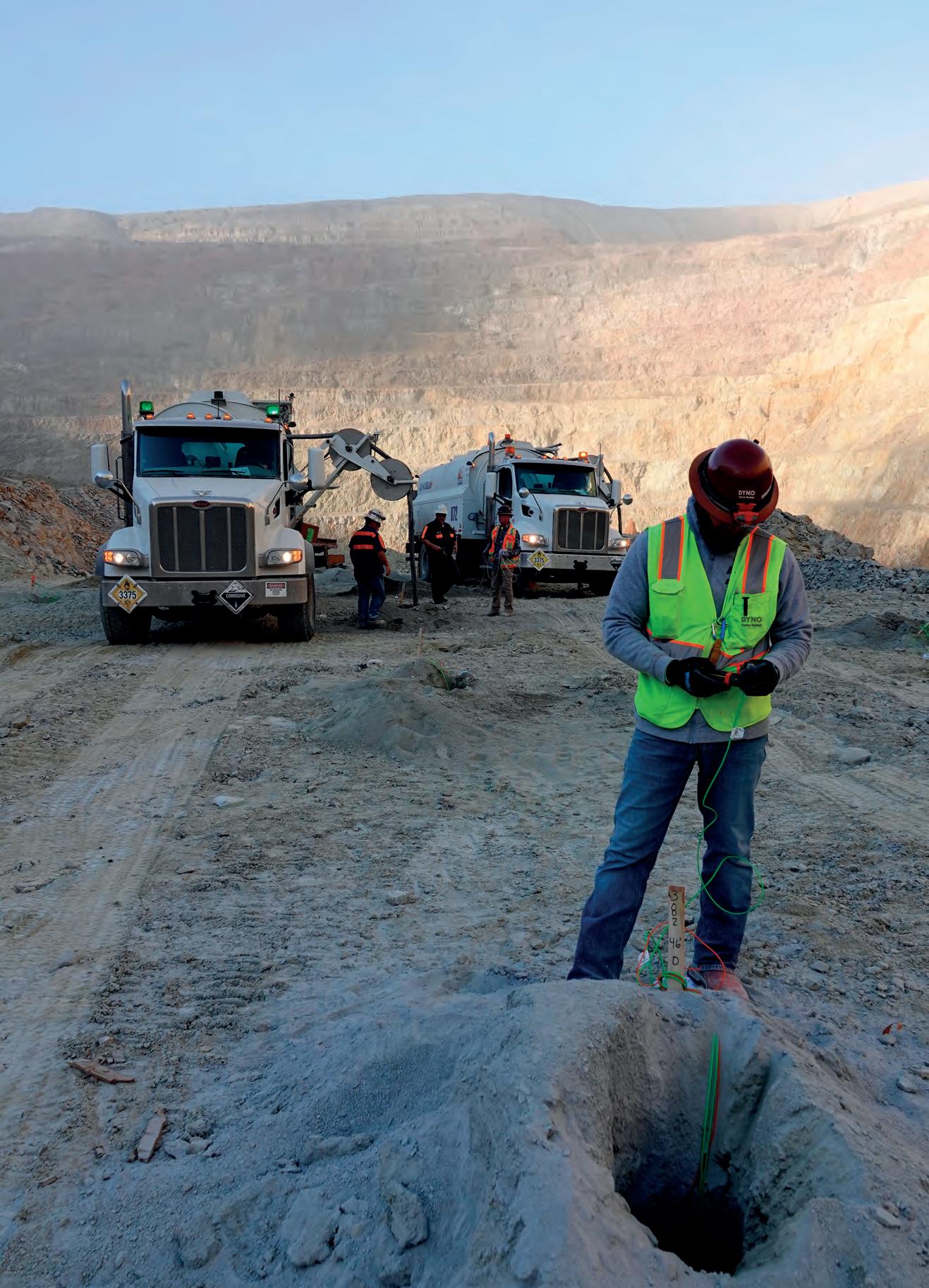
Guest Comment
It is well known that the mining sector is currently the oxymoron example of the energy transition – it is the supplier for the critical minerals essential for decarbonisation, whilst under significant investor pressure to plan and progress its own energy transition. Recently the hydrogen industry, though less understood than most renewable energy sources, is gaining traction in the mining sector as a potential avenue for mine site, and wider scope, decarbonisation.
MANAGING EDITOR
James Little james.little@globalminingreview.com
SENIOR EDITOR
Callum O’Reilly callum.oreilly@globalminingreview.com
EDITOR
Will Owen will.owen@globalminingreview.com
EDITORIAL ASSISTANT
Isabelle Keltie isabelle.keltie@globalminingreview.com
SALES DIRECTOR
Rod Hardy rod.hardy@globalminingreview.com
SALES MANAGER
Ryan Freeman ryan.freeman@globalminingreview.com
PRODUCTION MANAGER
Kyla Waller kyla.waller@globalminingreview.com
ADMINISTRATION MANAGER
Laura White laura.white@globalminingreview.com
EVENTS MANAGER
Louise Cameron louise.cameron@globalminingreview.com

EVENTS COORDINATOR
Stirling Viljoen stirling.viljoen@globalminingreview.com
DIGITAL ADMINISTRATOR
Leah Jones leah.jones@globalminingreview.com
DIGITAL CONTENT ASSISTANT
Merili Jurivete merili.jurivete@globalminingreview.com
Scope 1 emissions are direct greenhouse gas (GHG) emissions from sources owned or controlled by an organisation, while Scope 2 emissions are indirect GHG emissions resulting from the generation of purchased or acquired electricity, heating, cooling, and steam consumed by an organisation. Rio Tinto, BHP, Anglo American, and Vale all have goals to reduce Scope 1 and Scope 2 emissions in the short term by 2030, and long-term commitments to achieving net zero operation emissions by 2050. Other miners, such as Fortescue, have more ambitious goals, aiming to achieve carbon neutrality across their iron ore operations by 2030, and net zero emissions across their value chain by 2040.
Achievement of short-term goals is more attainable and likely to be achieved by divestment of operations with high GHG emissions, such as thermal coal, and changing of power purchasing and generation habits by switching to traditional renewables (with the added benefit of improved energy security). Long term goals are more uncertain however, given that the sector is largely relying upon technological innovation. Although the primary focus remains on electrification, solar, wind and energy efficiency, recently a growing number of mining companies have been proactively investing in the hydrogen industry. Anglo American have conducted a feasibility study into a hydrogen valley and partnered with First Mode to develop a hydrogen-powered mine haul truck. BHP has partnered with Hatch to design an electric smelting furnace pilot plant, which will test the production of steel from iron ore using renewable electricity and hydrogen. Fortescue is investing heavily in research and development focused on hydrogen technologies, and Fortescue Future Industries (FFI), a green energy and technology subsidiary of the miner, is a global supplier of green hydrogen.
There are two forefront applications for hydrogen in the mining sector: 1) transportation, and 2) power. For transportation, the reduction in the use of fossil fuel in site activities (Scope 1 emissions) and material transportation (Scope 2 emissions) is key. Hydrogen fuel cell vehicles – in the form of drill rigs, excavators, haulage trucks, and heavy-duty trucks or trains – are a potential solution which could also decrease the volume of critical minerals currently required in electrical vehicle lithium batteries – namely lithium, cobalt, nickel, and manganese.
For power, miners may be looking at consumer and industrial supply needs to mine sites and local vicinities. Miners will also have to consider the potential to produce renewable energy onsite, or to buy such renewable energy via a corporate power purchase agreement. Hydrogen projects have the potential to be placed on mine sites and mixed with current energy sources. Permits will need to be obtained and regulations adhered to, but transportation would be localised and easier than using pipeline, train, or ship transportation.
Presently hydrogen production is classified according to colour, which differentiates between the source of power used to achieve electrolysis. Green hydrogen – favoured as it uses renewable resources, such as wind and solar, as the source of power – currently comes with prohibitive costs and the requirement for access to renewable energy sources, which can add timing complications. This is in contrast to grey hydrogen, for example, which uses existing fossil fuel combustion to generate the power for electrolysis. Miners will need to consider their ‘colour’ appetite for hydrogen, against cost, time, and new incoming regulation.
When planning their decarbonisation path, mining companies must consider the relevant regulation with respect to the qualification of hydrogen as green (or renewable) hydrogen. The EU has recently made a major development with respect to this qualification criteria. The Delegated Acts, published in February under the EU’s new Renewable Energy Directive (RED II), require that hydrogen and hydrogen derivatives (such as ammonia and methanol) can only be considered as a renewable fuel of non-biological origin (RFNBOs) if they are produced from a renewable electricity installation directly connected to the hydrogen production plant (alongside other conditions). This proposed regulation could mean green hydrogen offtakes would indirectly provide more benefits to miners than cheaper grey or blue hydrogen solutions. Mining companies should consider combining renewable energy production for hydrogen production to fuel their trucks, trains, and drill rigs directly onsite. This would have a greater impact from an ESG perspective. Long-term Scope 1 emissions could also be a relevant consideration if relying upon fossil fuel combustion for hydrogen.
In summary, whilst it is likely mining companies will focus on the production of green hydrogen because of the recent uptake of installing onsite traditional renewable sources, Scope 1 emissions and increasing regulation should also be at the forefront of considerations when discussing hydrogen in the mining sector.
STAY SAFE ON SURFACE ... ... AND UNDERGROUND



Proximity Detection Solutions from Becker Mining Systems


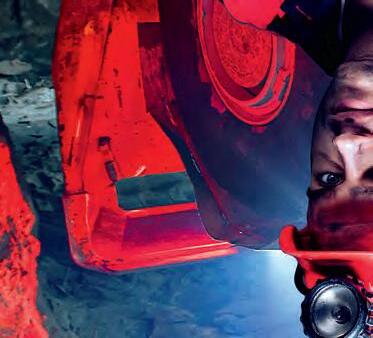

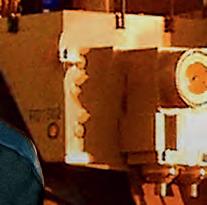







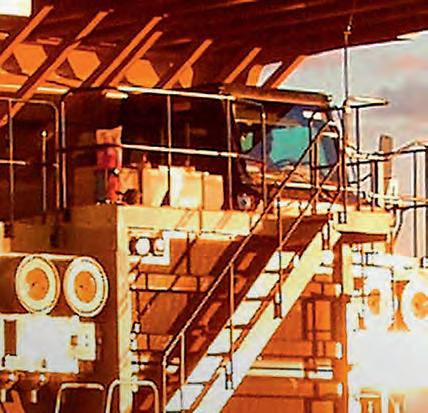




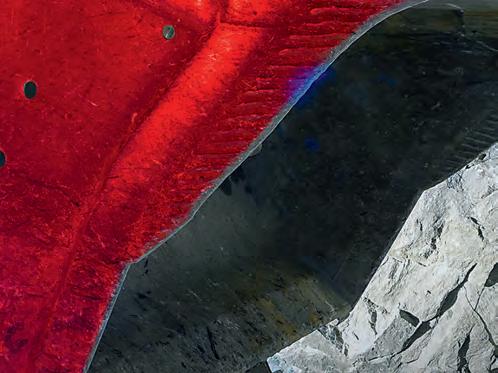

Reducing the number of on-site accidents in a mine is crucial; ensuring that personnel remain safe in both in underground and surface settings is necessary. Becker Mining Systems developed both the PDS4.0 and the smartdetect system with safety and proximity awareness in mind.

Level 9 compliant, and with a full range of attachments, PDS4.0 and smartdetect



have been designed to offer V2V, V2P, and V2X detection solution in one comprehensive and robust package, allowing for upgrades, and simple system modifications, based on the needs of the customer.


With smartdetect and PDS4.0 enabled vehicles; you will never again have to wonder “how close is too close”



WORLD NEWS
TOMRA Mining’s experience in the design and installation of large-scale ore sorting plants, as well as its collaborative approach, was the key to the successful design of the world’s largest lithium sorting plant. The installation has already started and is expected to reach completion in late 2023.
Pilbara Minerals owns the world’s largest, independent hard-rock lithium mine. It is located in Western Australia and produces a spodumene and tantalite concentrate. By pursuing a growth strategy to become a sustainable, low-cost lithium producer, the company has become a major player in the rapidly growing lithium supply chain. This investment will ensure the expansion of its large-scale operation in
order to meet the increasing demand for lithium driven by sustainable energy technologies, such as electric vehicles and energy storage.
Dale Henderson, Managing Director and CEO, Pilbara Minerals, comments: “This new facility to be constructed at our Pilgangoora Project will be the world’s largest lithium mineral ore sorting plant. TOMRA’s experience in large global sorting installations, innovative technology, and ability to provide local support were significant factors in our decision to work with them. From the start, the TOMRA team has been working side by side with us and our engineering partner DRA Global to deliver this important project.”
CANADA Caterpillar and NMG strengthen their zero-exhaust emission collaboration
On the foundation of their 2021 collaboration agreement and of technical work achieved together over the past two years, Nouveau Monde Graphite Inc. (NMG) and Caterpillar Inc. have signed definitive agreements to supply NMG’s Matawinie Mine (Quebec, Canada) with an integrated solution that covers a zero-exhaust emission fleet, supporting infrastructure, and service. Caterpillar is set to be NMG’s supplier of heavy mining equipment, supporting the progressive transition from traditional models to Cat® zero-exhaust emission machines as they become available. Moreover, NMG and Caterpillar have signed a non-binding memorandum of understanding (MOU) to advance commercial discussions targeting NMG’s active anode material. Through this offtake MOU, a full circular value chain could be established where NMG would supply carbon-neutral graphite materials to Caterpillar for the development of its secure, resilient, and sustainable battery supply chain that would serve to electrify heavy vehicles, including NMG’s Matawinie fleet.
Arne H Frandsen, Chair of NMG, said: “Caterpillar is providing NMG with a comprehensive solution for the Company’s Matawinie Mine, de-risking the adoption of new technologies, and optimising operational excellence through integrated infrastructure. At every stage of development,

management has worked to expand the field of possibilities for sustainability in our sector. And now, our new commercial relationship for NMG’s battery materials further elevates the impact of our collaboration with Caterpillar and the relevance of NMG’s business strategy. Today, we raise the bar again!”
Denise Johnson, Caterpillar Group President, commented: “I’m proud of the collaboration and work the NMG and Caterpillar teams have accomplished together in support of the Matawinie site. This project is an exciting one as it highlights what is possible when an effective energy transition roadmap is implemented that bridges the traditional product line to an integrated, electrified site of the future.”
Eric Desaulniers, Founder, President, and CEO of NMG, reacted: “Not only will we benefit from Caterpillar’s stellar expertise, renowned products and latest technological developments, but our team will also be at the forefront of the electric revolution in the sector, sharing insight, testing equipment for further optimisation, and providing battery materials to support electrification beyond our mine. This collaboration truly reflects our vision for leadership and unified efforts to advance responsible mining practices and global decarbonisation. I salute the commitment of Denise and Caterpillar’s team, without which our ambition would not have materialised so efficiently.”
WORLD NEWS
Diary Dates
INSIGHT SEMINAR – Digitalisation for more Sustainability: How to Reach a Digital Mine

24 May 2023
ONLINE
www.globalminingreview.com/events/ insight-seminar--digitalisation-for-moresustainability-how-to-reach-a-digital-mine
Discoveries 2023 Mining Conference
30 May – 01 June 2023
Mazatlán, Mexico
www.discoveriesconference.com
2023 Elko Mining Expo
08 – 09 June 2023
Elko, USA
www.exploreelko.com/top-events/ elko-mining-expo
Mines and Money Connect: Melbourne 2023
14 – 15 June 2023
Melbourne, Australia
https://minesandmoney.com/melbourne
9 th International Conference on Tailings
Management – Tailings 2023
14 – 16 June 2023
Santiago, Chile
www.gecamin.com/tailings
AIMEX 2023
05 – 07 September 2023
Sydney, Australia
www.aimex.com.au
China Coal & Mining Expo 2023
25 – 28 October 2023
Beijing, China
www.chinaminingcoal.com
AUSTRALIA BHP completes OZ Minerals acquisition
BHP has announced that it has completed its acquisition of OZ Minerals and the implementation of the scheme of arrangement for BHP Lonsdale Investments Pty Ltd, a wholly owned subsidiary of BHP Group Ltd, to acquire 100% of the shares in OZ Minerals Ltd (OZL). BHP Group Ltd is now the ultimate parent company of OZL.
In bringing together the BHP and OZ Minerals businesses, BHP will focus on the safe and reliable operation of the Olympic Dam, Prominent Hill and Carrapateena assets; building a shared culture of innovation and performance, and progressing sustainable growth options to establish a copper province in South Australia.
Mike Henry, BHP CEO, comments: “This acquisition strengthens BHP’s portfolio in copper and nickel and is in line with our strategy to meet increasing demand for the critical minerals needed for electric vehicles, wind turbines, and solar panels to support the energy transition. Combining our two organisations will provide options for growth, bring new talent and innovation to unlock these resources in a sustainable way, and deliver value to shareholders and communities.”
ARGENTINA Lilac Solutions achieves major milestone at Kachi Plant
Lilac Solutions has announced that it met a critical milestone at the Kachi lithium brine project, successfully producing 2500 kg of lithium carbonate equivalents (LCEs) using its proprietary ion exchange technology. Based on this successful result, Lilac has increased its ownership of the Kachi Project from 10% to 20%. The project is now on track to move from its pilot phase into commercial-scale development, which will make it the first lithium brine project in South America to produce lithium at commercial scale without the use of evaporation ponds for lithium concentration.
The achievement at the Kachi Project represents a historic advancement in lithium production technology. This is the first successful implementation of ion exchange for lithium production in South America, home to most of the world’s lithium brine resources. The milestone builds upon Lilac’s success in completing over 200 000 hours of operations at mini-pilot and pilot scale in North America.
To stay informed about upcoming industry events, visit Global Mining Review’s events page: www.globalminingreview.com/events
Dave Snydacker, CEO of Lilac Solutions, said: “Today’s announcement marks a new era in scalable lithium production. Lithium is a cornerstone of the energy transition, but limitations in production technology have led to increased costs, scarcity, and extreme price volatility. Today, we’ve proven that it is possible to produce high-purity lithium faster and without evaporation ponds, all while protecting surrounding communities and ecosystems. I’m grateful to Lake Resources for their partnership in developing this project, and I look forward to our continued success as we chart a new path in lithium production.”
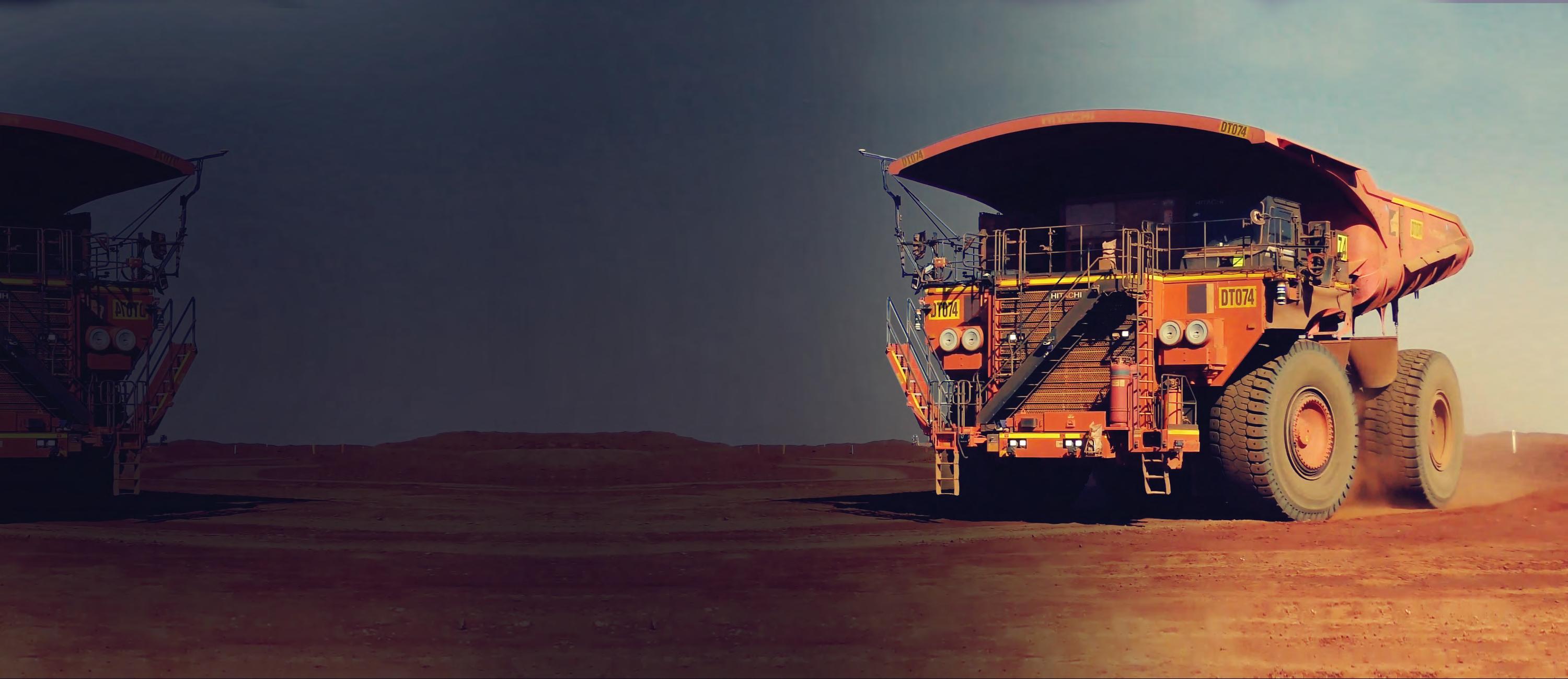
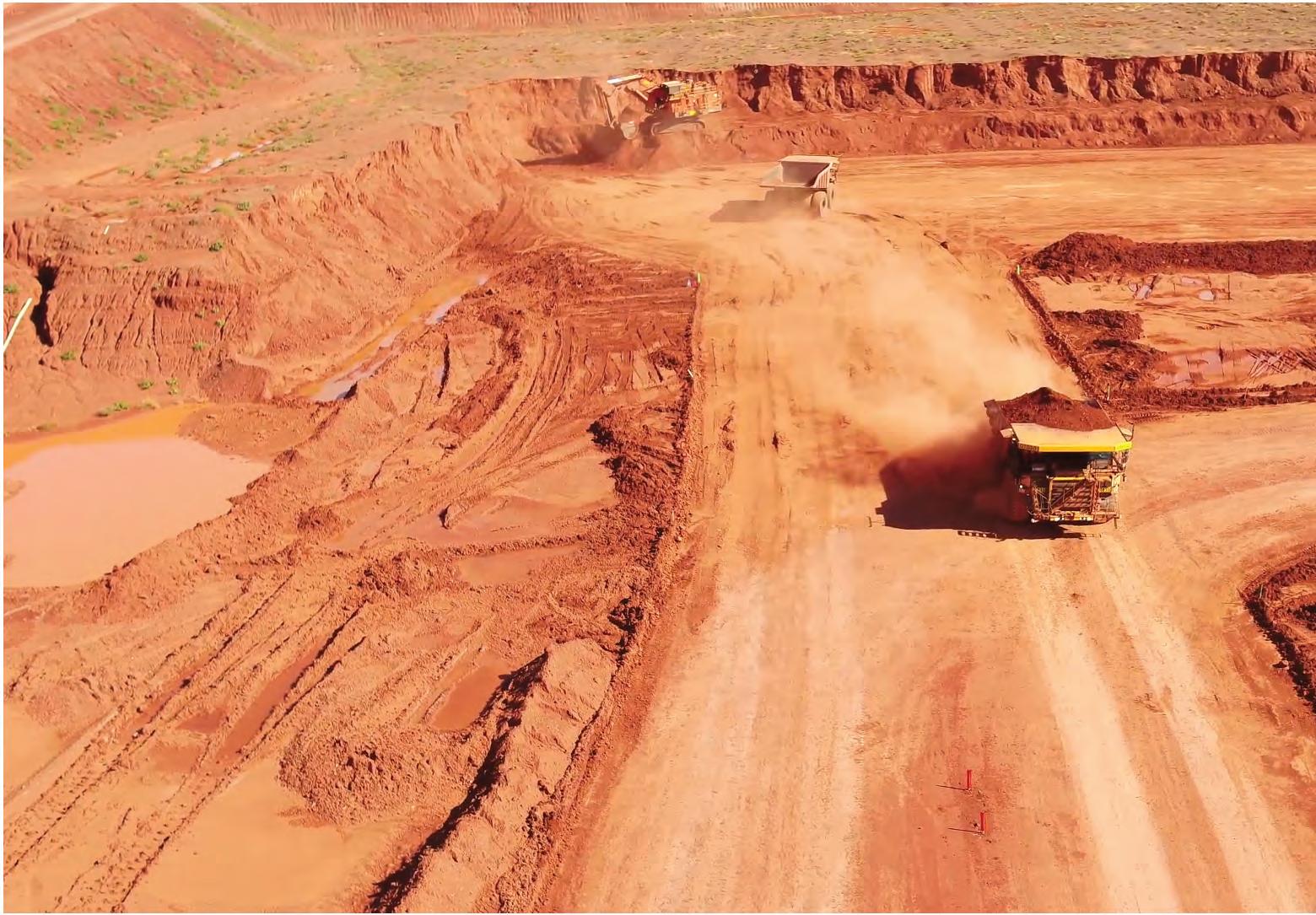

Jorge Uzcategui and Kirill Kirilenko, CRU, UK, look at some of the key trends defining the gold mining industry’s mid-term profile and production levels.
In recent years, despite gold trading at prices well above marginal costs, the gold mining industry has been struggling to grow output. The pressures and challenges facing the sector are numerous and diverse. Among them, declining ore grades, rising costs, more stringent environmental regulations, increased pressure from stakeholders to deliver value, a shortage of skilled labour and dwindling reserves, have all increased the difficulties of operating in the sector. More recently, the COVID-19 pandemic and geopolitics have also added increased level of disruptions and surging inflation to the list. Yet, the mining industry is experiencing a rising wave of mergers and acquisitions, with gold miners leading the charge, as companies look to consolidate and increase their share in the market. Higher price expectations are increasing the value of mergers and acquisition (M&A) transactions, but miners focused on long-term value are entering deals that provide efficiencies, replenish reserves, and return value to stakeholders. Taking all these factors into consideration, what can we expect of the gold industry in the coming years?

Gold miners are price takers, not price setters
To set up the scene, it is important to focus first on one of the specific features of the gold market – the miners’ lack of power to immediately influence gold prices. In the mining industry, the marginal cost of production of a metal generally acts as a floor for the metal price. However, this is not the case for gold. The reason for this is that the gold price is not determined by the balance between supply and fabrication demand, but rather by the high levels of investment holdings, which is the function of the geopolitical and economic outlook.
It is estimated that around 200 000 t of gold has been mined throughout history. Gold is virtually indestructible, and its high value increases recycling, which means that almost all the gold ever mined is still around in one form or another. At current levels, 200 000 t are equivalent to 69 years of fabrication demand. To put this into perspective, if hypothetically, all the currently operating gold mines shut down today, there would still be enough metal to satisfy market needs – not for weeks or months, as is the case with other commodities, but for seven decades. It is therefore fair to say that the gold market is probably the only one where the miners, unlike in other commodity markets, are price takers, rather than price setters.
Organic growth – why is it often overlooked?
It takes 10 to 20 years to bring a typical gold mine from discovery to commercial production. This means that many gold mines starting production now are tapping mineralisation discovered more than 10 years ago. Because of the long lag time between initial investment and first output, gold producers need to invest in exploration and resource management to constantly replenish exhausting reserves at operating mines. Failure to do so poses a significant threat to their long-term sustainability and profitability.
The gold industry in particular is highly impacted by a mine’s reserves base, since the industry operates on relatively short life of mine (LOM). While copper mines can operate for at least 30 years (and in many cases it is much longer), the average LOM for the top 10 gold miners is 15 years, using current production levels. This LOM average excludes Polyus, as the company has approximately 40 years of LOM, nearly three times the average, making it the largest gold company by gold reserves. The company’s reserve base increased 71% between 2019 and 2020 when it added 40 million oz from the massive Sukhoi Log project in Russia.
Aside from Polyus, gold majors have mostly seen their reserves flatline or shrink over the last four years.
Agnico Eagle is one of the top companies that has organically grown its reserves base, which increased by a CAGR of 6% between 2019 and 2021. The company also boosted its reserves by 90% in 2022 after consolidating its assets through its merger with Kirkland Lake. Newmont and Barrick Gold also saw their reserves base increase by 3.4% and 10.1%, respectively, in 2022. However, that was not the case for the rest of the top miners, who saw their reserves diminish.
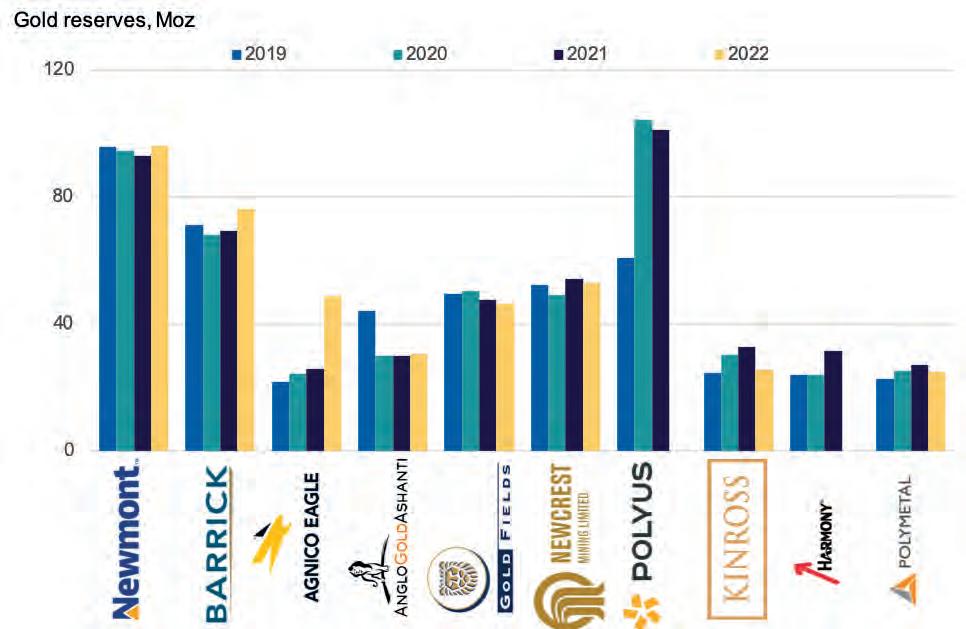
Nevertheless, Polyus and Agnico show the two primary strategies that miners employ to address reserves exhaustion – investing in exploration and development and pursuing M&As. Both strategies require significant capital investments and involve certain levels of risk. However, due to the higher level of uncertainty associated with exploration and the time required to develop new mines, gold miners have tended to replenish reserves through M&As.
Gold M&A deals keep driving industry consolidation
Pursuing acquisitive growth strategies can unlock high value for miners, including access to new reserves, diversification of metals, and operational efficiencies.
M&A transactions in the gold sector are pervasive –primarily because the gold industry is highly fragmented. Low barriers to entry, technological innovations to process difficult ores at economical costs, and the ability to remain profitable at small scales have allowed for many companies to enter the industry with relative ease. In most mining and metals industries, the top five producers account for more than 30% of global production – for gold, the top five majors produce less than 20% of global output. Therefore, gold miners look for ways to consolidate and increase their market while replenishing reserves.
Recently, the gold industry has seen a huge wave of deals. Newmont’s sweetened US$19.5 billion bid for the takeover of Newcrest could potentially be the largest merger deal in the gold industry. The increased offer came after Newcrest gave Newmont access to its book after having rejected a previous offer of US$17.5 billion.
PLENARY SPEAKERS













If successful, the acquisition would increase Newmont’s lead as the largest global gold company, raising its production by 48% to approximately 9 million oz/yr of gold and expanding its access to copper.
Furthermore, in 2022, the US$10.6 billion Agnico Eagle and Kirkland Lake merger was agreed, which created the current third largest gold producer. More recently, Pan American Silver’s acquisition of Yamana Gold’s LATAM assets and Agnico Eagle’s acquisition of Yamana’s 50% ownership in Canadian Malartic were completed at a value of US$4.8 billion.
These deals are all part of a consolidation trend that will continue growing as miners struggle to tap into new deposits and look for opportunities to improve synergies and lower costs.
Can a peak in inflation improve miners’ margins?
Over the past two years, inflationary pressures have driven up costs for the mining industry. The gradual reopening of global economies from the COVID-19 pandemic caused shocks across supply chains for many industries, with suppliers not being able to meet pent up demand due to bottlenecks and logistical disruptions. This caused an increase in consumables and raw materials prices for producers and manufacturers, raising their cost of production. Many of the problems brought up by the pandemic are still lingering and having an effect on costs. And these have been further exacerbated by Russia’s invasion of Ukraine.
Yet, although gold miners have seen their costs increase, the average miner is still taking in healthy margins. In the pre-pandemic years between 2015 and 2019, the average
All-In Sustaining Cost (AISC) margin for gold miners was 33%. Since 2020, AISC margins have increased to average more than 40%. The year 2020 was a particular record high for miners with the average gold producer netting 46% in margins – this was the year gold prices hit their all-time high of US$2075/oz in August. Fuelled by investors’ worries of rising inflation from governments, and central banks printing large amounts of money to stimulate their economies during the pandemic, gold’s long-held view as a safe haven asset and a hedge against uncertainty drove many to stash their cash in the yellow metal.
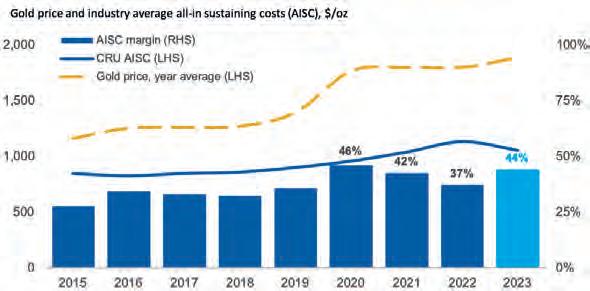
Nonetheless, these healthy margins have not only been driven by the rise in gold prices – miners have also shifted their focus to cost discipline and operational efficiencies to remain profitable during these inflationary periods.

Looking ahead, CRU expects macroeconomic input prices to ease off from the 2022 highs. As supply chains normalise, inflation slows down with interest rate rises and energy costs decrease, it is estimated that gold miners will see overall lower input prices. Along with a higher gold price, the industry can expect increasing margins for 2023.
However, as the industry transitions towards more sustainable practices and technologies to reduce its environmental impact, can gold miners expect their costs to increase in the long term? While ESG initiatives tend to require higher upfront capital investments, they are estimated to result in cost savings over the long term. This is because improving energy efficiency in mining equipment and facilities lowers energy consumption and costs (reducing waste decreases disposal costs and integrating renewable energy sources), diversifies the power mix, provides a stable source of electricity, and mitigates risks associated with fluctuations in energy prices.
As stakeholders’ pressures mount for the industry to reduce its impact on the environment and improve sustainability performance, many gold miners are adopting ESG measures, particularly on the emissions front. Currently, all top 10 gold miners have set net zero targets by 2050. Some have started to turn their pledges into actions by investing in renewable energy sources, integrating the use of electric vehicles, improving waste and water management, and implementing more efficient processing techniques.
This is a trend we will see further develop – as 2050 approaches, government policies and investor pressure will keep driving miners to produce more sustainably.
Primary gold supply may be close to its peak
According to CRU, total world identifiable mine supply (excluding artisanal, illegal, and state secret gold mining) increased from 2547 t in 2001 to 3045 t in 2022. This equates to a CAGR of 0.9% over the period. CRU expects mine production to grow for three more years – rising to a peak of 3261 t in 2025 – before falling back, as output at more mature mines begins to wane and operations draw closer to the end of their economic life. As a result, a steady
flow of new mines coming into production will be required to replace the lost output and keep growth momentum intact. However, this may prove difficult due to the natural thinning of the project pipeline resulting from insufficient investment in exploration and development activities in recent years. Moreover, many of the recently launched projects are expected to reach their nameplate capacity around that year, meaning that depleting/closed mines will no longer be fully replaced by new ones.
On a company-by-company basis, the top gold miners are expecting higher production growth in 2023 compared to their 2022 output. Newmont’s production outlook is approximately 1% higher than last year, when it produced 5.96 million oz. Barrick, Agnico Eagle, and Kinross estimate a 6 – 7% increase, based on their 2023 mid-point guidance range, while Polyus expects to grow its production by 12% y/y after a decline in output last year from low grades.
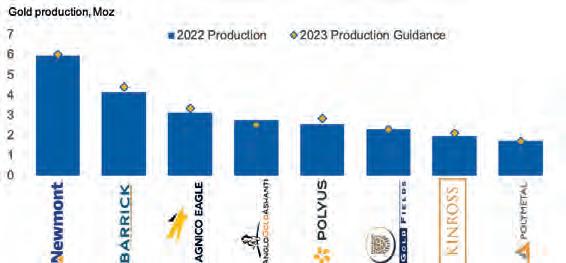
However, this trend is not the case for the South African miners who estimate lower output for 2023. AngloGold Ashanti will suspend its processing plant at AGA Mineraçao operations in Brazil to revamp the TSF at the site (in order to meet new tailings storage regulations in the country), and Gold Fields’ Cerro Corona and Damang mines are maturing and nearing the end of their lives.
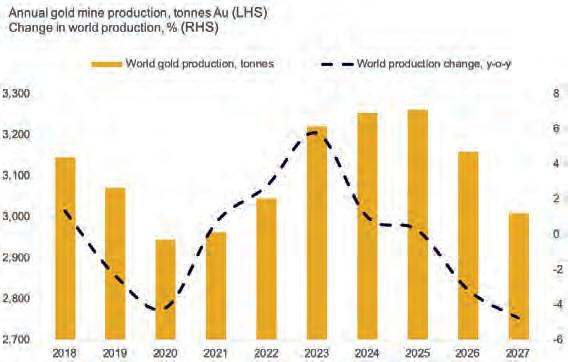
While sanctions did not greatly impact Russian gold mine output, development plans faced challenges
Since Russia first invaded Ukraine, Russian miners have faced a number of sanctions that have affected their operations and delayed development plans. Polymetal and Polyus have reported that purchases from western contractors and suppliers have been limited in Russia, so alternative supply and logistics routes have been required to continue business as usual. Reduced access to US$ and EUR funding have meant that companies have had to borrow at higher rates in local currencies and CNY with local banks.
Polymetal, one of the country’s top gold miners, is developing a new pressure oxidation plant (POX-2) in Amursk to increase its in-house refractory ore processing capacity – reducing processing and transportation costs, and increasing gold recoveries. The initial CAPEX was estimated at US$431 million, and the plant was estimated to commence production in late 2023. However, the company announced that it would be delaying the start-up of POX-2 by six months, due to logistical complications. While Polymetal has not reported any CAPEX escalation, the plant cost is expected to be higher than originally estimated. The company is also preparing to relocate its domicile from Jersey to Kazakhstan, where it operates two mines, in order to potentially separate its Russian assets from the Kazakh ones. Currently, Russia has banned the sale of gold assets from miners domiciled in ‘unfriendly’ jurisdictions.
This being the case, sanctions do not appear to have directly impacted the country’s mined gold output. Polymetal increased its 2022 production by 2% y/y,
achieving 1.7 million oz of gold equivalent (GE), meeting its start of year production guidance. Meanwhile for Polyus, while total gold output declined 6% y/y to 2.5 million oz, the primary driver was grade decline in some of the company’s operations, not the sanctions.
Gold’s bullish momentum continues to build
Gold prices are an important driver of M&As and investment activity in the gold mining industry. Strong prices provide a favourable backdrop for prospective buyers and investors. They also give a boost to exploration budgets. The collapse of SVB and the crisis at Credit Suisse have hit investors’ risk appetite and led them to rethink their hawkish expectations from central banks across the globe. Markets are now beginning to price in rate cuts for this year on the expectation that central banks will shift towards a more dovish position to relieve stress on the financial system.
For now, CRU Economics forecast a further 25 bps rate increase by the US Fed in May, bringing the benchmark rate to 5.00 – 5.25%, where it is expected to remain throughout 2023. Over the next few weeks, gold prices are likely to remain supported by the risk of contagion in the banking sector and renewed fears of a 2008-style financial crisis. The rally may continue in 2H23 on the back of anticipated cuts in interest rates.
Figure 5. Production outlook is mostly positive for top gold miners in 2023 (DATA: CRU, Company reports). *Note: Kinross and Polymetal report production guidance in gold equivalent ounces (GEO).Perttu Aho, Robit, Finland, highlights the importance of collaboration with customers and partners when designing new products – bearing in mind that no two work sites are the same.
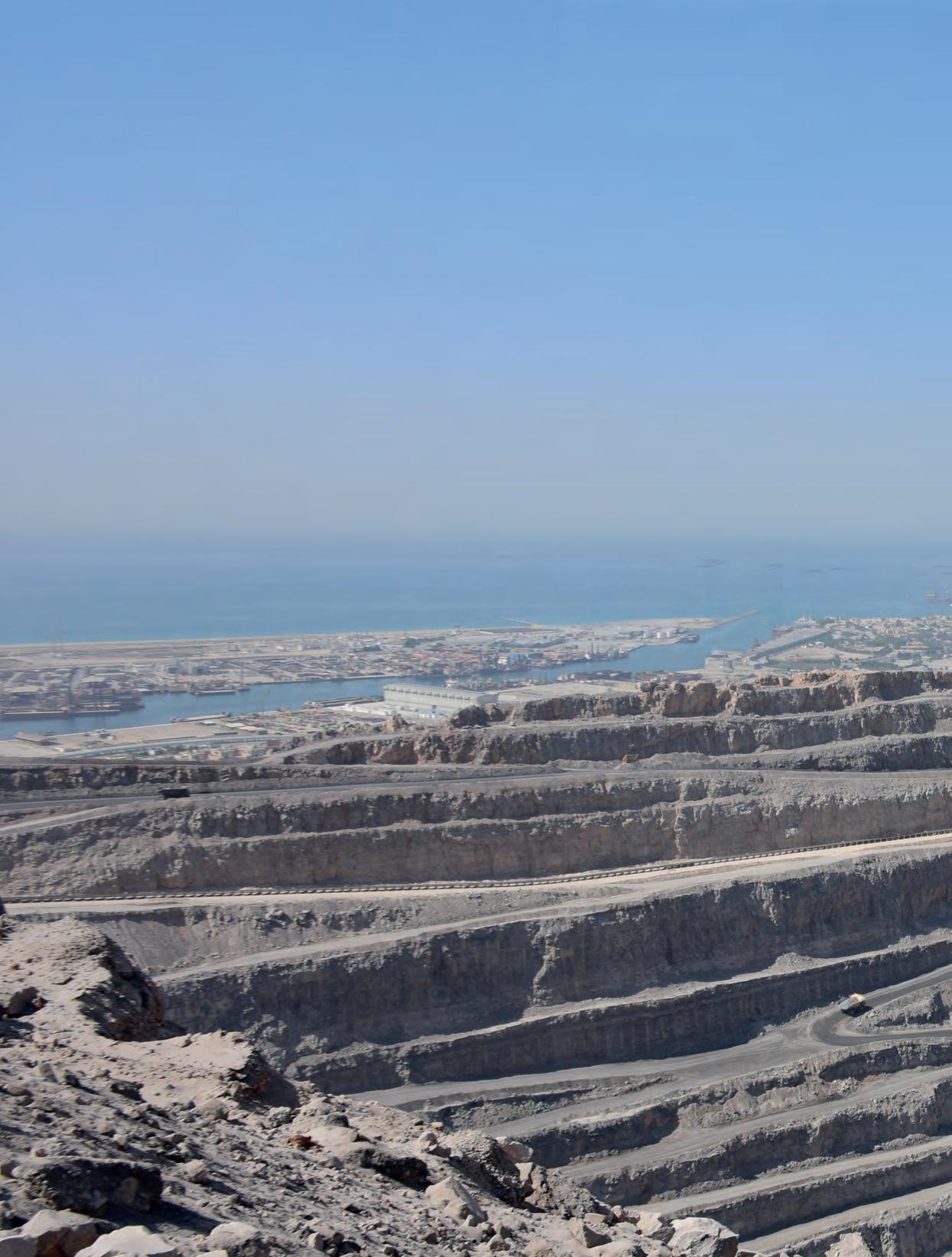
When developing products for use under several differing conditions, it is vital to take into account the experiences of the people actually using the products. In the modern times, it is of course possible to simulate all sorts of conditions in a lab environment, or by using computer models, however these can often only give an indication of the product’s performance in the real world. Those working in the conditions set by said real world can tell you a whole lot more.
When it comes to product development, Robit has a long tradition of working with its distributor partners and end-customers alike. The end-users know their own equipment and circumstances better than anyone, which means that they can often test new and existing products under true-to-life conditions. This way it can be ensured, that the results of the test correspond to the actual performance and durability capabilities of the products.
Collaborating towards better efficiency
One of Robit’s long-term test partners is Stevin Rock, which operates a limestone quarry in the United Arab Emirates (UAE) with a fleet of Down-the-Hole (DTH) machinery. The company has been using Robit manufactured DTH tools since 2016, starting from the first international DTH supply contract Robit won after acquiring Drilling Tools Australia (DTA). Stevin Rock has been making use of the full suite of Robit’s drilling consumables, with a 4 in. hammer as its work horse of choice and adaptors, drill tubes, as well as 110 mm and 127 mm bits aiding the work.
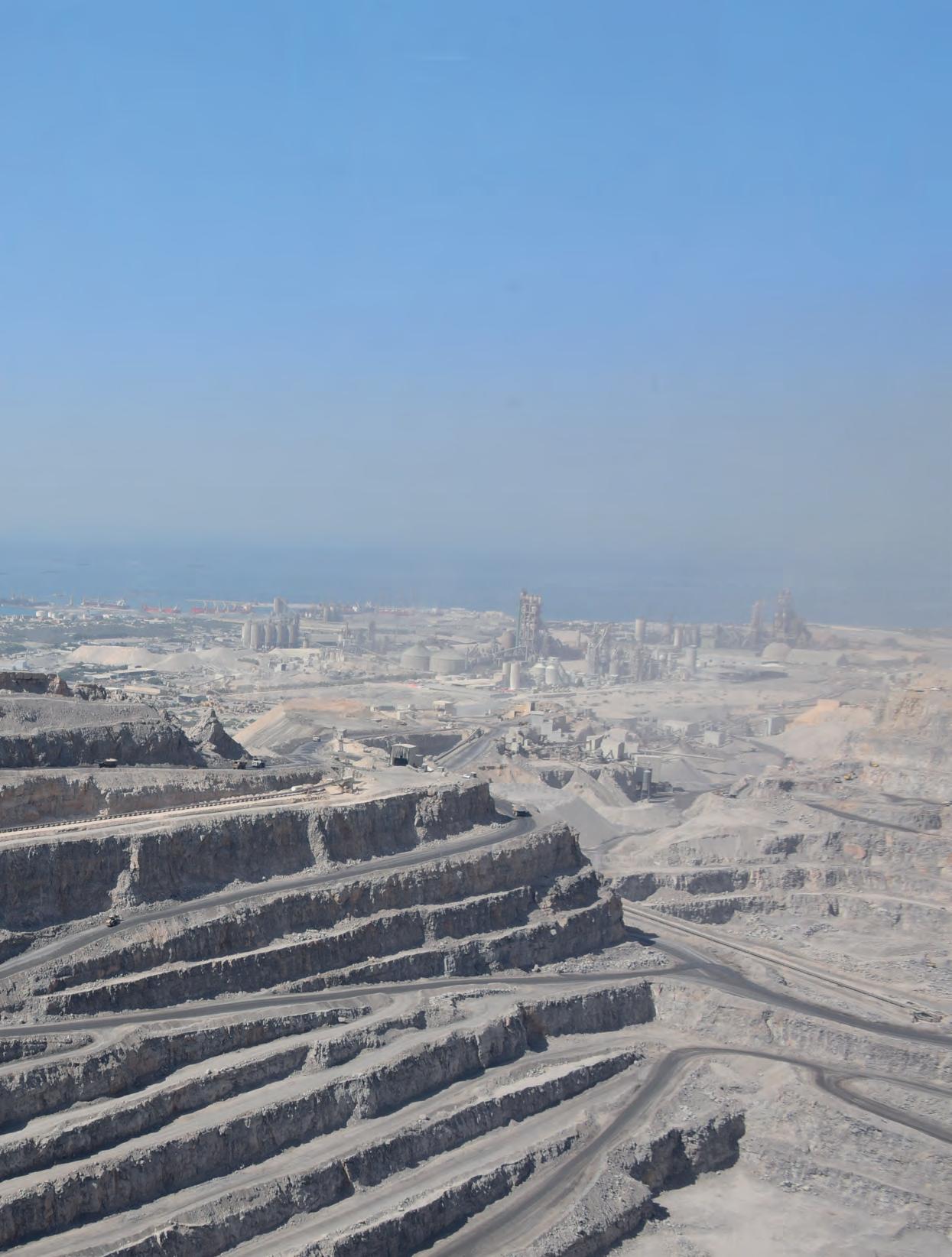
The initial contract was agreed in 2016 after Robit succeeded in trials conducted at the Stevin Rock quarry. Robit’s products triumphed with a longer life span and lower cost per meter than the competition at the time. While some alternatives provided a higher rate of penetration, this benefit was unfortunately trumped by the higher number of breakages it brought along with it. They decided to go with Robit, which offered known products that provided conclusive and consistent high performance.
In the years since the initial contract, Robit has proven itself with an excellent overall life span of products, as well as a high level of service and numerous supporting drill master visits. Indeed, these drill master visits have been the core of the support and collaboration towards the customer. A Robit drill master has been visiting the site on support duties a couple of times a year, with the goal of helping Stevin Rock optimise its processes. In addition to this, Robit, along with its distributor partner DeltaCorp Global, has conducted onsite practical and theoretical training sessions to the operators and mechanic teams on hammer assembly, preventative maintenance, bit wear, failure modes, and best drilling practices.
Robit always aims to find the best possible distributors for each region; the goal is to find those who understand the local market, culture, and the general way of thinking. In DeltaCorp Global, Robit has one such winner. During the years, DeltaCorp fostered a very close working relationship with Stevin Rock. This has allowed the company to consistently offer timely and relevant support to its customer, across its organisation. In addition to the visits from Robit’s drill masters, DeltaCorp’s representatives conduct at least one
visit each week to one of Stevin Rock’s three sites. The purpose of the visits ranges from stock deliveries to management meetings, where product quality and lifespan, as well as stock levels and forecasts are assessed. While the representatives are onsite, they will also pay a visit to the drill rigs, in order to receive direct feedback from the drill operators. On top of all that, the DeltaCorp representatives maintain constant communication with Stevin Rock’s site management, working swiftly in the event any concerns should be raised, such as a sudden need for urgent deliveries, an unforeseen breakage, or some other operational problem.
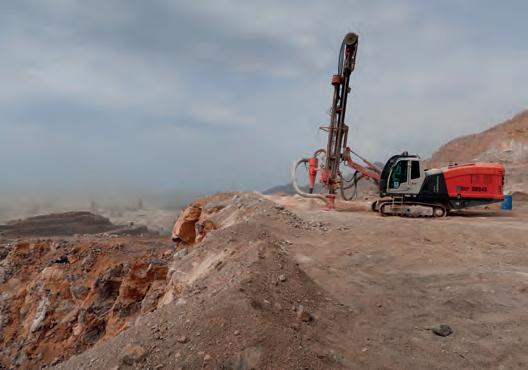
Thanks to the continuous support, Stevin Rock has managed to improve the results it achieves with its equipment even further. When the initial contract started in 2016, the average life span of a drill bit was 2000 m, with hammers reaching approximately 8000 m. With all the training given to the personnel to help them make the most out of their tools, the efforts to optimise the drilling processes, as well as the product improvements from Robit’s engineering and production teams based on the customer’s feedback, the average bit lifespan has been extended to 4500 m, with the hammers regularly exceeding 25 000 m.
Collaboration as the basis for product development
During its time working with Stevin Rock, Robit has conducted numerous tests on a multitude of hammers and bits. The aim of
all these tests has been to increase the life span of the products, as well as their performance, with minimal downtime and breakages, so that customers can reduce their overall drilling costs to the minimum. These tests, and others like them carried out with other customers, have been at the heart of Robit’s product development process. These trials have led to discoveries and breakthroughs that have guided the designs of new products, with the upcoming H-series hammers as an exemplary reference point.
The new H-series hammers have been designed with performance and versatility as their guiding principles. The goal was to provide customers with a hammer range that can be utilised in different environments, with minimal breakages and maximised utility for each individual operator’s circumstances. The feedback received from Robit’s customers led the company to develop a new modular design, which offers increased flexibility and adaptability to varying conditions. With a few simple changes in the assembly of the hammer, they can be customised for each customer’s needs; whether one wants to run them with improved productivity in mind or needs to be able to use a lower capacity compressor, the H-series hammers can be modelled to suit these requirements.
In practice, the modular design of the hammer allows Robit to offer four hammers in one base design. The assemblies vary between high power and low volume, as well as foot valved and tubeless. With these specifications, the following variations can be created: high power with a foot valve, high power tubeless, low volume with a foot valve, and low volume tubeless. The high-power assembly offers high blow energy and high air volume, which result in a fast penetration rate and is suitable for deep-hole drilling. On the other hand, the low-volume assembly provides lower blow energy and lower air consumption, which are ideal for soft ground while keeping the hammer energy efficient.
As an example, Stevin Rock was looking to include a faster drilling hammer in its selection, in order to improve the potential productivity. Robit provided the company with two different assemblies of the new H-series models with differing internal arrangements to control the airflow, one with low air volume and the other with high air volume. These new hammers were to be tested against the tried-and-true D45 hammer from Robit’s older hammer range. The tests showed a considerable, and consistent, improvement in the rate of penetration across the board. The penetration rates went up in all tests, with the smallest increase at 14% and the biggest improvement at 30%, compared to the previous model. The highest rate of penetration reached during the tests was 63.18 m/hr. These results also correlated with those seen from prior tests, ensuring the validity of the results.
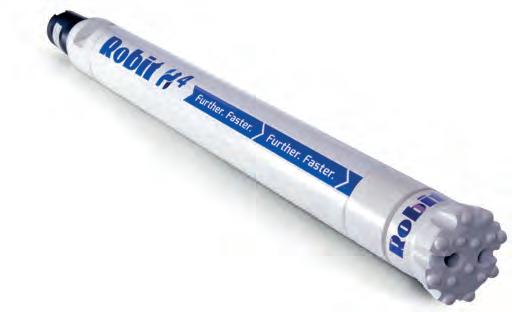
Conclusion
With its new hammer range, Robit wants to bring more options to the market, while still guaranteeing high performance. If one thing has become crystal clear during the company’s collaboration with its customers, it is that no two drill sites are the same. For this reason, the company is making sure to let its customers’ and distribution partners’ voices be heard when developing new products and improving on existing ones.
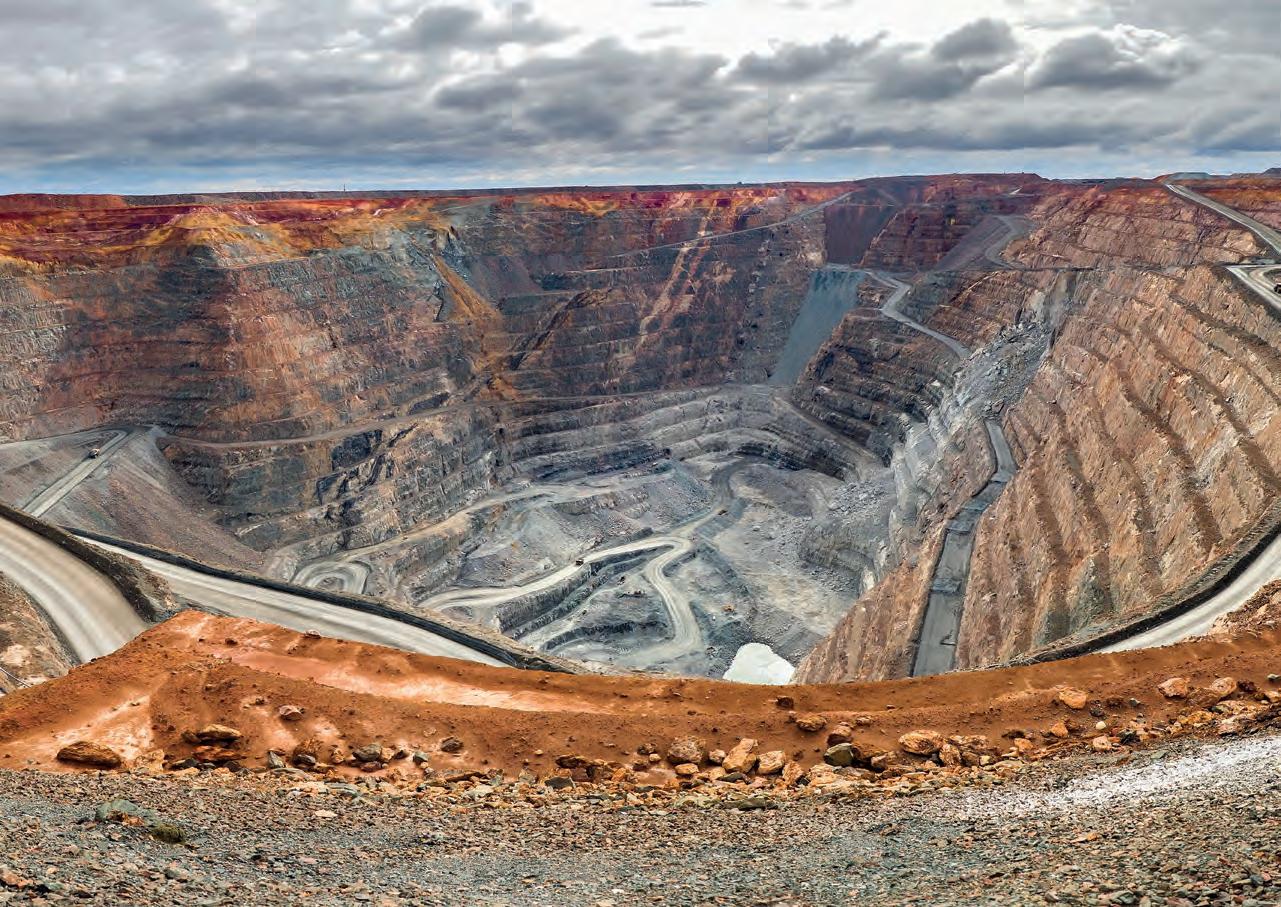

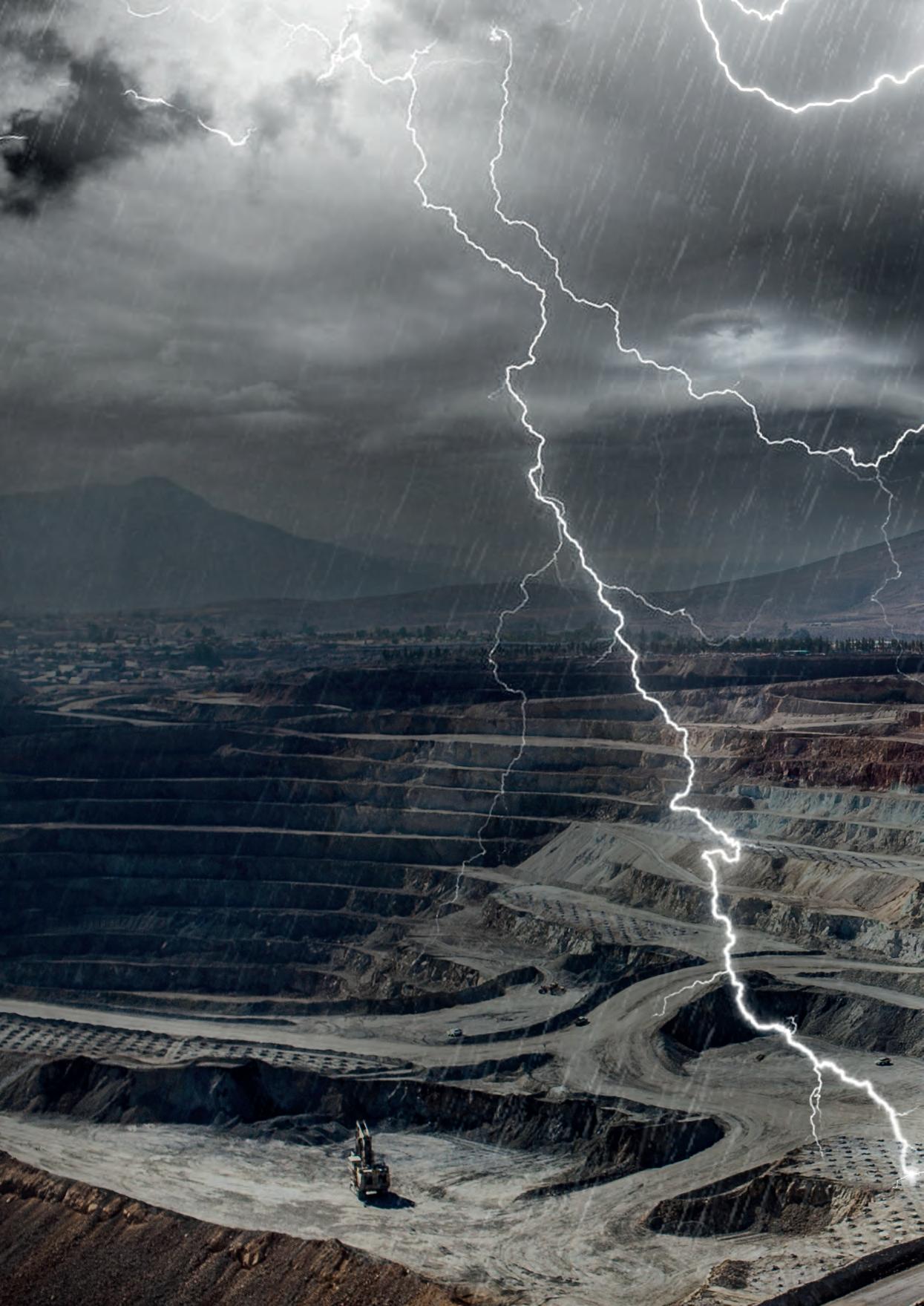
Conventional initiation systems impose constraints that limit mining fleet productivity during thunderstorm seasons, potentially costing hundreds of production hours. Wireless initiating systems can remove these constraints and create opportunities for improvements in safety and productivity.
Innovating initiations
Orica launched WebGen™ 100 as the world’s first totally wireless initiating system in 2017. By March 2023 the WebGen system had been used in over 5000 blasts globally. In the first five years of application, wireless blasting transformed the way underground mines work by making previously inaccessible ore safely recoverable.
In March 2023 Orica released WebGen 200 Surface (Figure 1), a wireless primer designed for surface mining applications. Orica’s WebGen 200 wireless initiating system includes four primer variants and a wider range of booster weights, opening new segments, applications, and opportunities in both surface and underground mining. WebGen uses low frequency magnetic signals to communicate through rock to WebGen primers made of an i-kon™ W detonator, a Pentex™ W booster and a disposable receiver (DRX™).
Eliminating physical wired connections to a blast or blasthole opens a whole new range of possibilities. WebGen 200 Surface reduces blast crew exposure to hazards including stemming dust, working under highwalls, and pedestrian-vehicle interactions. It also creates opportunities for higher productivity and mine schedule flexibility, by reducing mining fleet shutdowns during lightning storms and turning loaded blast patterns into temporary haul roads.
Lightning risk in surface mines
Lighting strikes create high temperatures and pressures and induce strong electric currents that can damage and initiate sleeping blastholes primed with conventional detonators. Even electronic detonators that are immune to common industrial electrical sources are not immune to the immense energy of a lightning strike. There is no single global database of unplanned initiation due to lightning, but anecdotal evidence indicates that it happens more than a few times a year.
The conventional approach to managing lightning risk around sleeping blasts is to impose an exclusion zone around sleeping blastholes. This disrupts loading, hauling, and drilling activities within the exclusion zone. As the thunderstorm approaches the blast crew must cease work, collect explosive components on the surface, and untie connected initiation systems. This takes time and exposes the blast crew to risk if the storm approaches rapidly.
Due to thunderstorms, some mines in tropical regions lose tens of hours of production a week, most of the year. It is also notoriously difficult to predict when to stop work and impose the exclusion zone. Lightning can occur well ahead of rainfall, and tens of kilometres from what appears as a thunderstorm on a rain radar. This unpredictability leads to conservatism and causes production delays even when the risk is low.
In conventional wired and signal-tube based initiation systems, the risk exists due to the conducting path between the surface and the primer. Wireless systems remove the risk by removing the connection between the primer and the surface.
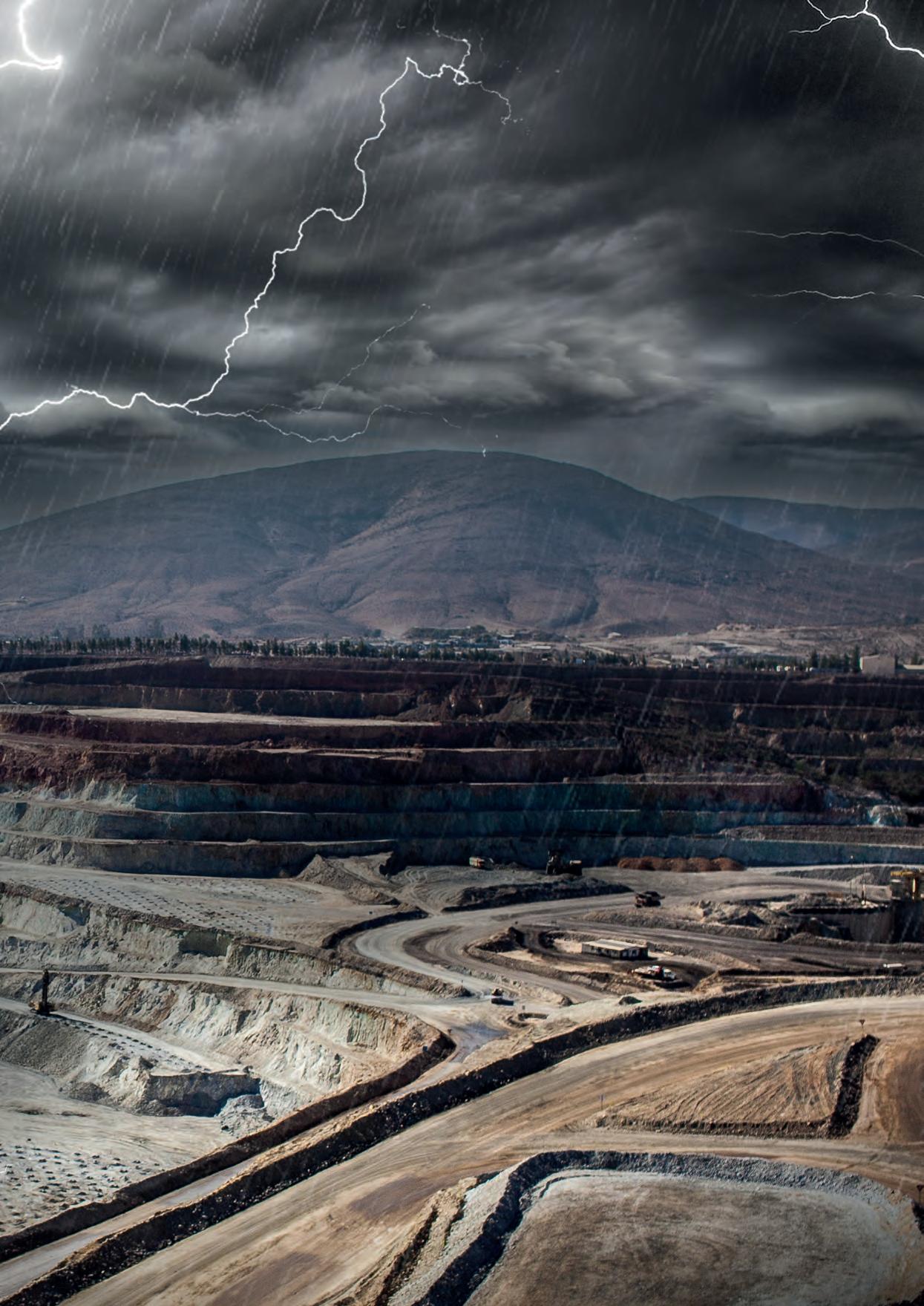
An initiation system without a physical connection from the primer at the bottom of the blasthole to the surface is practically immune to a lightning strike.
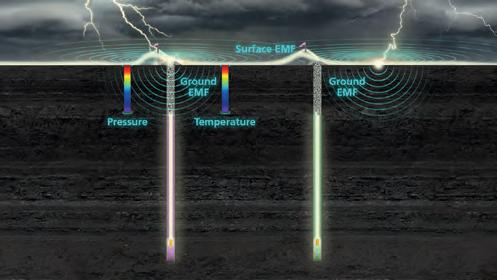
With wireless blasting, the consequence of lightning strikes on loaded blastholes is mitigated so that thunderstorm exclusion zones can be reduced or eliminated, enabling operators to reclaim hours of lost production time. Orica has extensively modelled and tested to confirm that a WebGen wireless primer in a blasthole is protected from all credible energy sources that might initiate or damage it, provided it is three metres below the surface. In a lightning event, the temperature and pressure effects of lightning are rapidly attenuated by the earth (Figure 3). Therefore, blasts primed only with WebGen do not require an exclusion zone during thunderstorms, provided explosive items are at least three metres below the surface.
While WebGen primers loaded in blastholes at least three metres below the surface can be considered safe from lightning, there remains a risk of people being struck. Blast loading operations must cease during lightning storms, and people must seek shelter in a building or a vehicle.
Case study: Vale Salobo Mine – Brazil
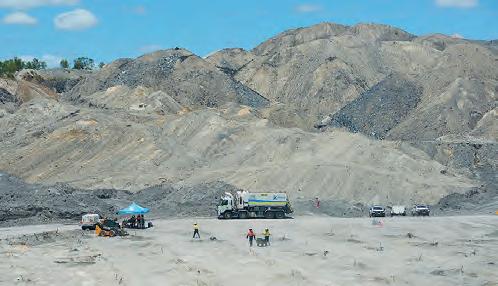
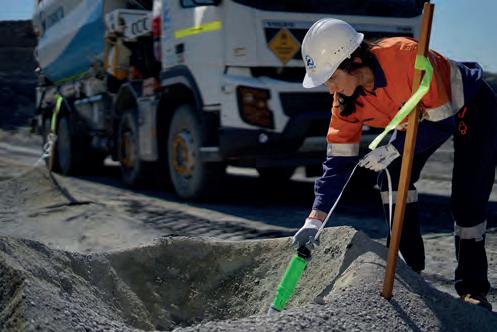
At Vale’s Salobo Mine in Brazil, the wet season occurs from November to April. During this season, thunderstorms frequently cause production delays because an exclusion zone must be enforced around all sleeping blastholes charged with wired detonators. Trials using WebGen demonstrated the safety and productivity benefits of eliminating wires. The blasts used 580 WebGen primers in 445 blastholes to fire 545 t of bulk explosives, breaking over 1.5 million t of rock.
These WebGen blasts reduced the downline failure rate to zero, eliminating the risk of misfires due to wire damage. The risk of unplanned initiation from lightning was also eliminated. These factors contributed significantly to the safety of operations, reducing exposure to the risk of an unplanned detonation during charging, stemming, and digging.
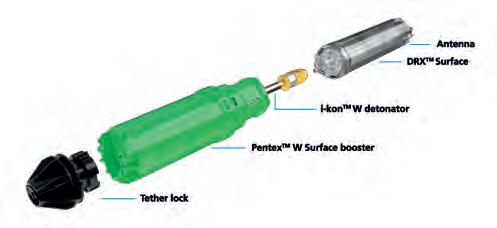
Case study: Terracom Ltd Blair Athol Mine – Queensland, Australia
WebGen 200 Surface has also ignited the interest of Blair Athol mine (Figure 4). Located in central Queensland, Australia, the lightning storm season lasting half the year can be challenging and disruptive to the mine. Mining activities cease during a thunderstorm, and lightning can severely impact mining activities. The ability to work for longer as a storm approaches is important to the mine. The team at Blair Athol are looking to reduce lightning related delays with the WebGen wireless initiating system.
Conclusion
Wireless blasting removes many of the constraints imposed by conventional wired and non-electric initiation systems in surface mines, by eliminating the wire or signal tube from the blasthole. When there is no surface connection to the primer, lightning exclusion zones around sleeping blastholes can be eliminated. This gives mine schedulers and production planners much greater flexibility and increases the available production time.
WIRELESS BLASTING SOLUTIONS
Space is at a premium at the bottom of the pit. WebGen™ 200 Surface eliminates traditional scheduling constraints.
WebGen™ 200 Surface reduces exposure to geological hazards by minimizing the need for revisiting blastholes. With wireless detonation, all explosives are isolated within the blasthole, eliminating the risk of vehicle interactions with explosive components. Making it safe to transform a loaded blast into a productive haul road. orica.com/wireless
GET MORE FROM YOUR BLASTING WITH WIRELESS TECHNOLOGY
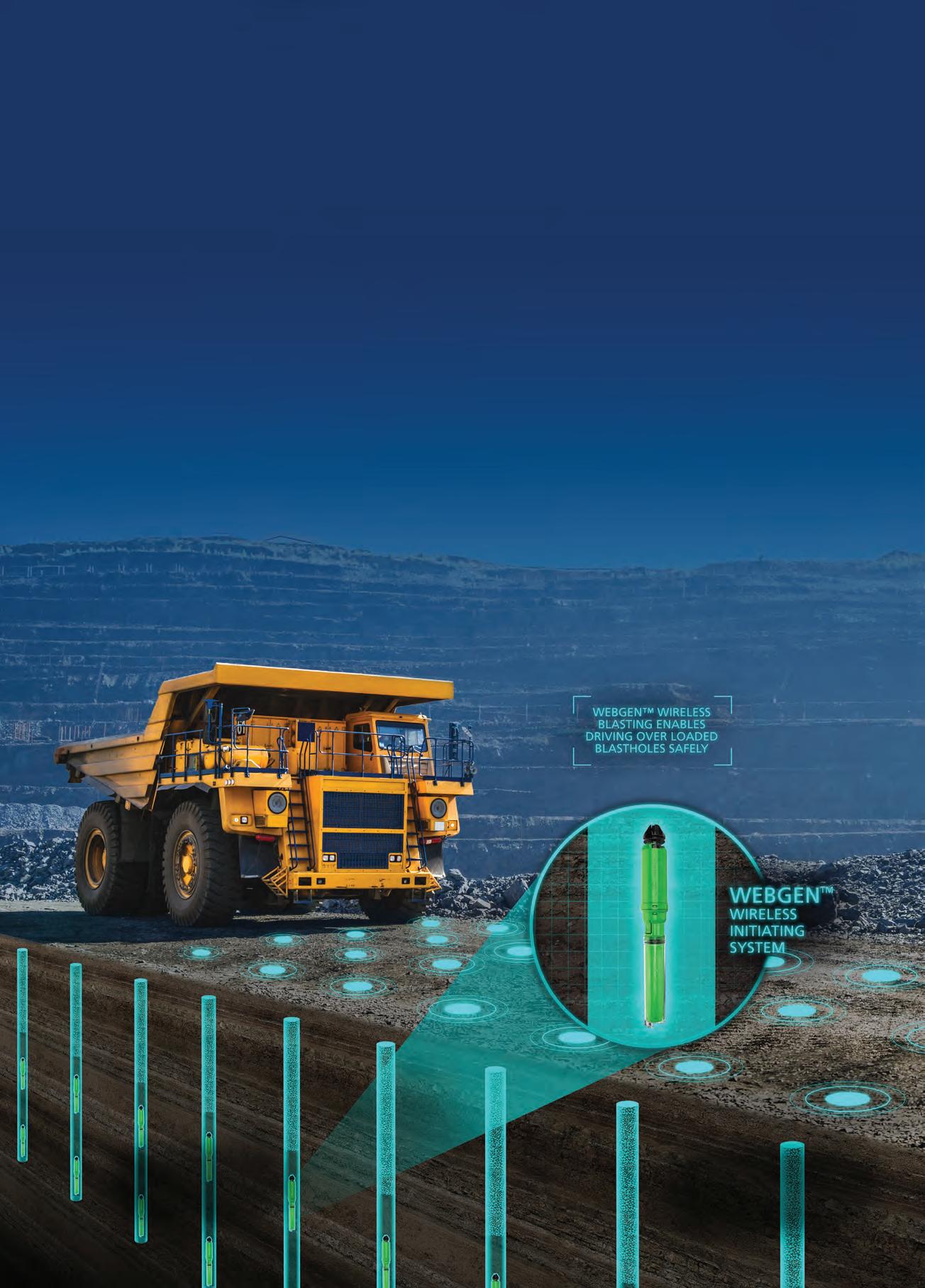
Greg Lanz and Simon van Wegen, Komatsu, USA, outline the need for greater collaboration in the mining industry and the potential advancements an open ecosystem approach could bring about.

SIX REASONS WHY AN OPEN ECOSYSTEM IS THE FUTURE OF MINING
Innovation is critical to the future of the mining industry. Only through innovative solutions can mining improve the efficiency of processes, reduce costs, and meet society’s demands for sustainability and environmental responsibility.
Of course, individual companies launch new products, services, and solutions every year that help mining evolve and advance down that path, but what if innovation in mining was collaborative and more of a group effort? What if there were a way for the many companies, partners, and suppliers a mining operation uses

to work together seamlessly for the greater good of the customer, while also benefitting their own interests in the process?
This school of thought is based on a concept known as ‘network effect,’ which is a principle of open technology ecosystems. The key question to ask is: do you want to bet on the innovation of just one or a small handful of companies, or even the innovation of an entire industry?
What exactly is network effect?
When thinking about an open network, a Wi-Fi network naturally comes to mind. Of course,
Wi-Fi networks require strong security to prevent unwelcome users, but it is open to all approved participants with the right credentials. Parties that exchange data on a shared Wi-Fi network can then create
new solutions and value not directly created by the network itself.
In mining, operation centres often use mining networks to leverage technology, data, and automation to help run things efficiently and to troubleshoot issues. However, those individual technologies typically use proprietary data and interfaces, and many companies deploy ‘closed’ systems that are part of ‘one-stop’ solutions from a single vendor.
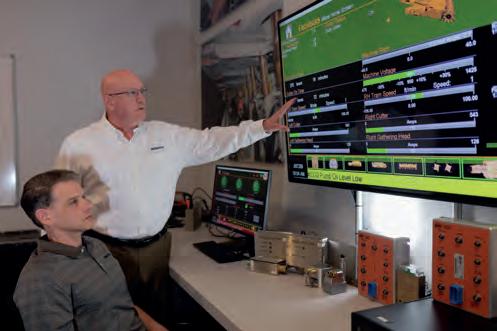
Komatsu is taking a unique stance in favour of interoperable collaboration by building an open technology ecosystem. It will be inclusive with many technologies working together and be available to customers, partners, suppliers, and vendors. This ecosystem will organically promote an atmosphere where everyone can freely share information to better understand and optimise operations – creating a safer, cleaner, and more productive environment.
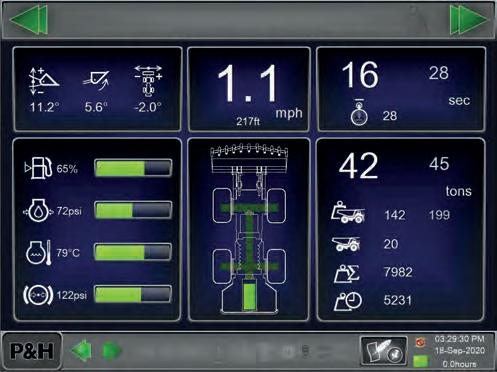
This concept aligns with Komatsu’s promise of creating value together. The fact is that no one company covers the entire value chain in mining, however groups of companies working together can create an ecosystem that helps customers leverage the strengths of each individual entity, building a critical mass of efficiency and innovation in the process. The challenge is convincing everyone to participate and work together. Komatsu’s vision is that everybody will receive more from an open ecosystem than they put in.
Moreover, this is not just theory – this vision is backed up by research. A recent Multidisciplinary Digital Publishing Institute study showed that collaborating with the competition is beneficial. The research showed that when competitors collaborated for at least three to five years, their costs were reduced by up to 50%. The Harvard Business Review also studied several instances of collaborating with competitors and found a history of positive outcomes.1
What are the advantages of an open ecosystem?
There are six clear benefits that an open ecosystem could deliver to mine operators and their providers.
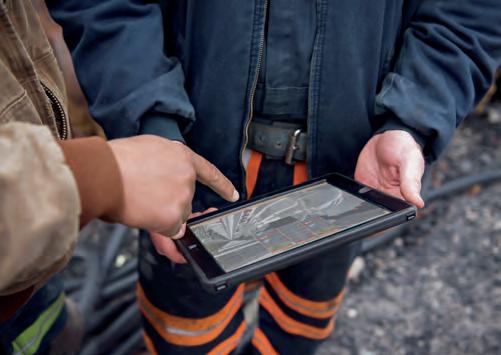
1) Leverages the unique breed strengths of each participant in the ecosystem
Mine operators naturally gravitate toward doing business with companies that have proven best-in-class products or solutions. Rather than a closed ecosystem, where one or a small handful of companies purport to ‘do it all’, mining operations will benefit from having access to the best-of-breed in all critical areas.
2) A holistic approach that yields greater value for all
The popular phrase, ‘a rising tide lifts all boats’, applies to an open ecosystem. A comprehensive network of many participants provides the visibility and capabilities mining operators need to hit their production targets and lower the total cost of ownership. Competitors learn from others in areas where they lack competency, perhaps unlocking

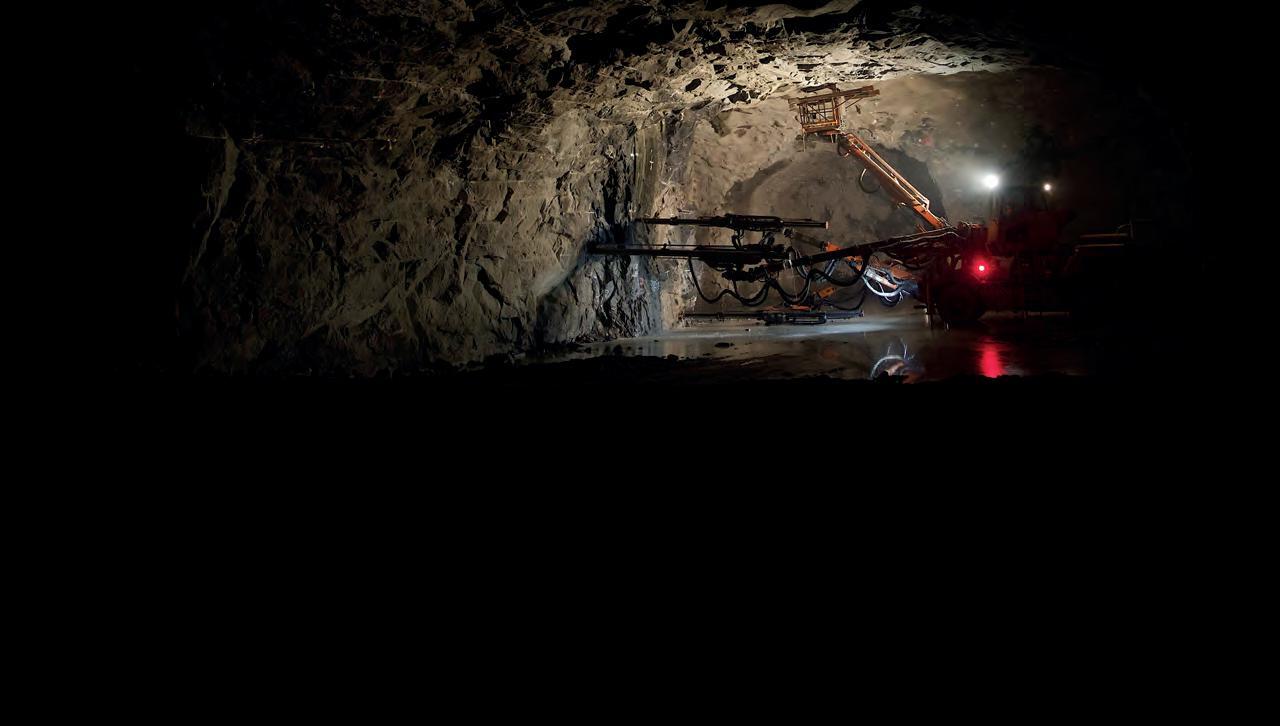
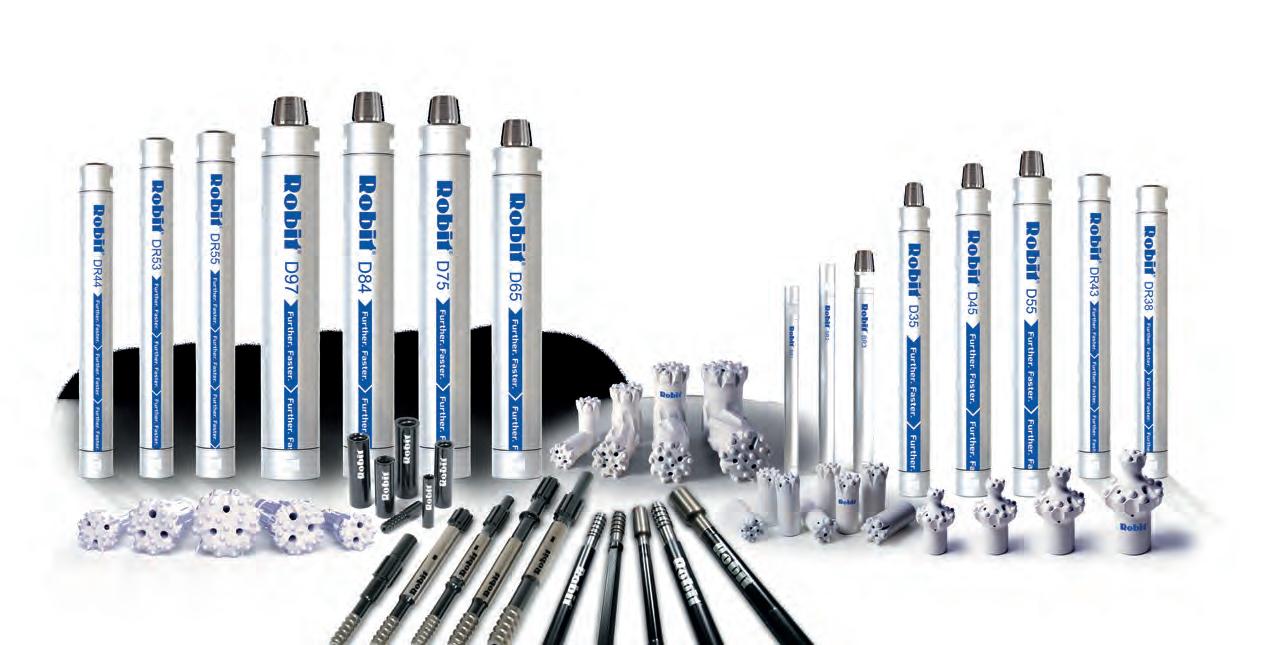
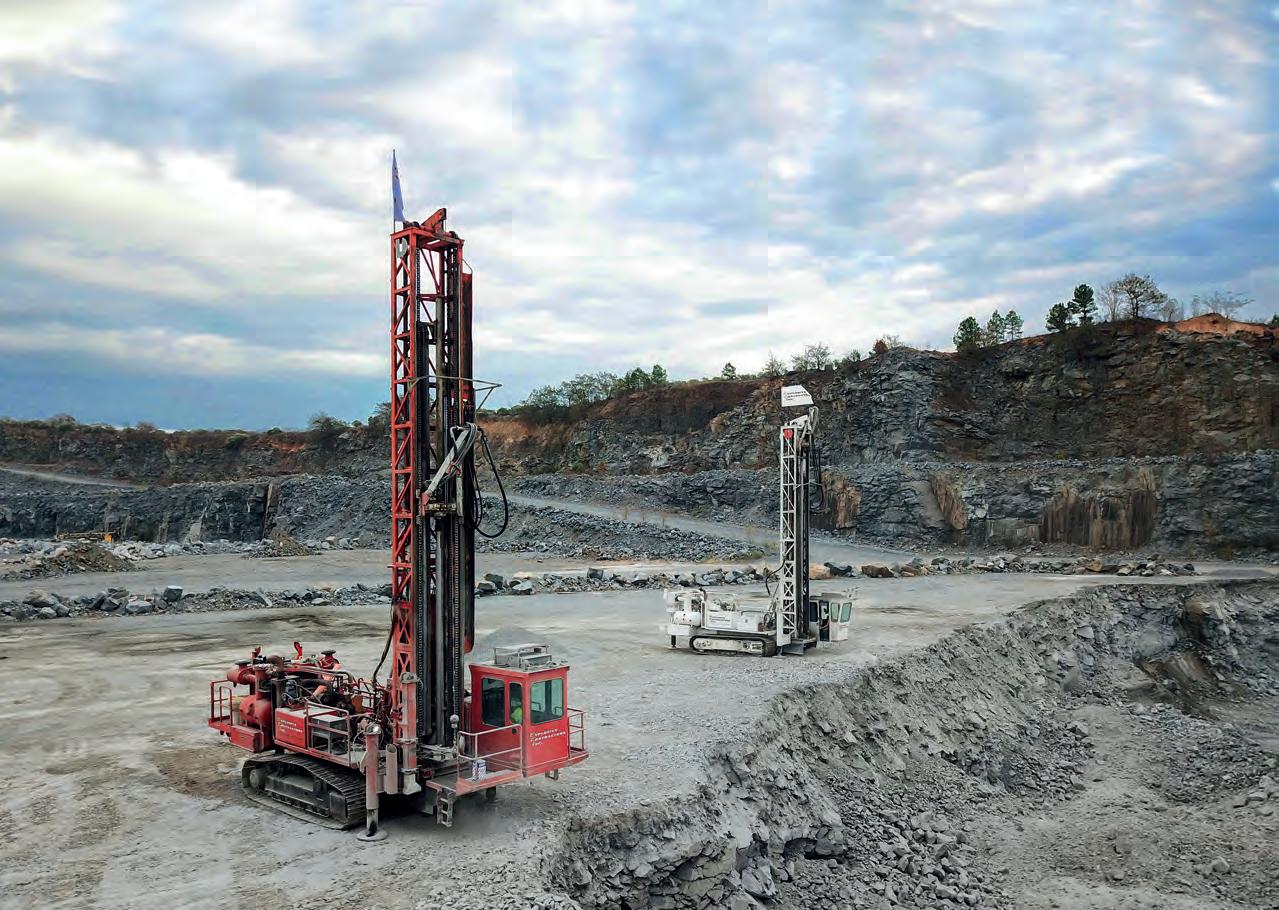

new opportunities because they have access to much richer information, while ensuring that proprietary information and confidential data that should not be shared are safeguarded.
3) More data equals greater insights
More participants means more data that can be analysed to create new and powerful insights. These actionable insights can positively impact a mining operation across the board, helping personnel make better decisions and improve key processes. Because cybersecurity and confidentiality are top concerns for any company, an open ecosystem must also have the necessary ‘guard rails’ in place to prevent abuses or breaches.
An example of this benefit on a smaller scale is a recent collaboration between Komatsu and Cummins to share data for an integrated remote equipment monitoring solution. By sharing equipment health and performance data over a common infrastructure and collaborating on health analytics, both companies can access the same secure data and develop joint analytics and insights. Data is collected on a single device, and all actions are managed in a shared case management system, allowing experts from both teams to work remotely with a customer’s maintenance staff.
4) Empowers the customer to operate more efficiently and solve problems in their own way for their unique operation
An open ecosystem gives mine operators more freedom of choice to problem-solve or improve processes. It provides mining customers with the power to connect the dots within the ecosystem as they see fit, so that everything works better together and the distinct needs of their operation are fully met.
With an open ecosystem, everyone works together to share information, so customers can optimise across the mining value chain. It is when data can be freely exchanged and collaboration is possible that really big problems
are solved. The more that can be shared, the bigger the problems that can be solved.
5) Unlock new and ‘hidden’ efficiencies
Greater visibility across the entire supply chain and value chain will highlight complex interdependencies that can be optimised and even automated. In many cases, the underlying digitalisation has already happened, but the data is locked in proprietary silos.
Many mining operations automate various tasks via software. Still, those individual solutions do not provide the full efficiency benefits. The disadvantage of automating an individual task is that bottlenecks are pushed further down the value chain. The efficiency benefits only come when there is visibility all the way through the value chain. Some vendors claim to be able to provide this by connecting automated tasks in a closed environment, but this negates the benefits of industry-wide collaboration.
6) Helps mining operators achieve their optimisation and decarbonisation goals

The industry is at a tipping point where these areas need to be firmly addressed by mining operators. Yet, no individual product, service, or provider has the complete solution. Substantial progress in these areas can only come by leveraging multiple vendors.
Consumers are increasingly demanding greater environmental transparency from producers – and that is not just the producers own environmental footprint, but that of their suppliers too. The industry needs a step change in data sharing to make this possible.
How to get started
Collaboration of key players within an industry is not a new concept. Within the mining industry, there have been various efforts through the years to improve collaboration for the good of customers, such as efforts to agree on standards. With a focus on ‘adding value together’, the team at Komatsu driving this collaborative initiative sees an open ecosystem as potentially transformative for mining.
While this kind of orchestration-level optimisation has not yet been developed, if a foundation can be established and all the right parties brought to the table, acknowledging that no one player has all the answers, that is when all participants start working with each other and innovation accelerates. The transformation the industry needs has to come from everyone, together. Putting the toolsets in place to create an open environment for change is the first step.
References
1. HAMEL, G., DOZ, Y., and PRAHALAD, C.K., ‘Collaborate with Your Competitors – and Win’, Harvard Business Review, (January/February 1989), https://hbr.org/1989/01/collaborate-withyour-competitors-and-win
Eric Wasmund, Eriez Canada, Jose Concha, Eriez Peru, and Homie Thanasekaran, Eriez Australia, examine how innovations in cell technology can help maximise mineral recovery from froth flotation – resulting in more profitable and sustainable projects.
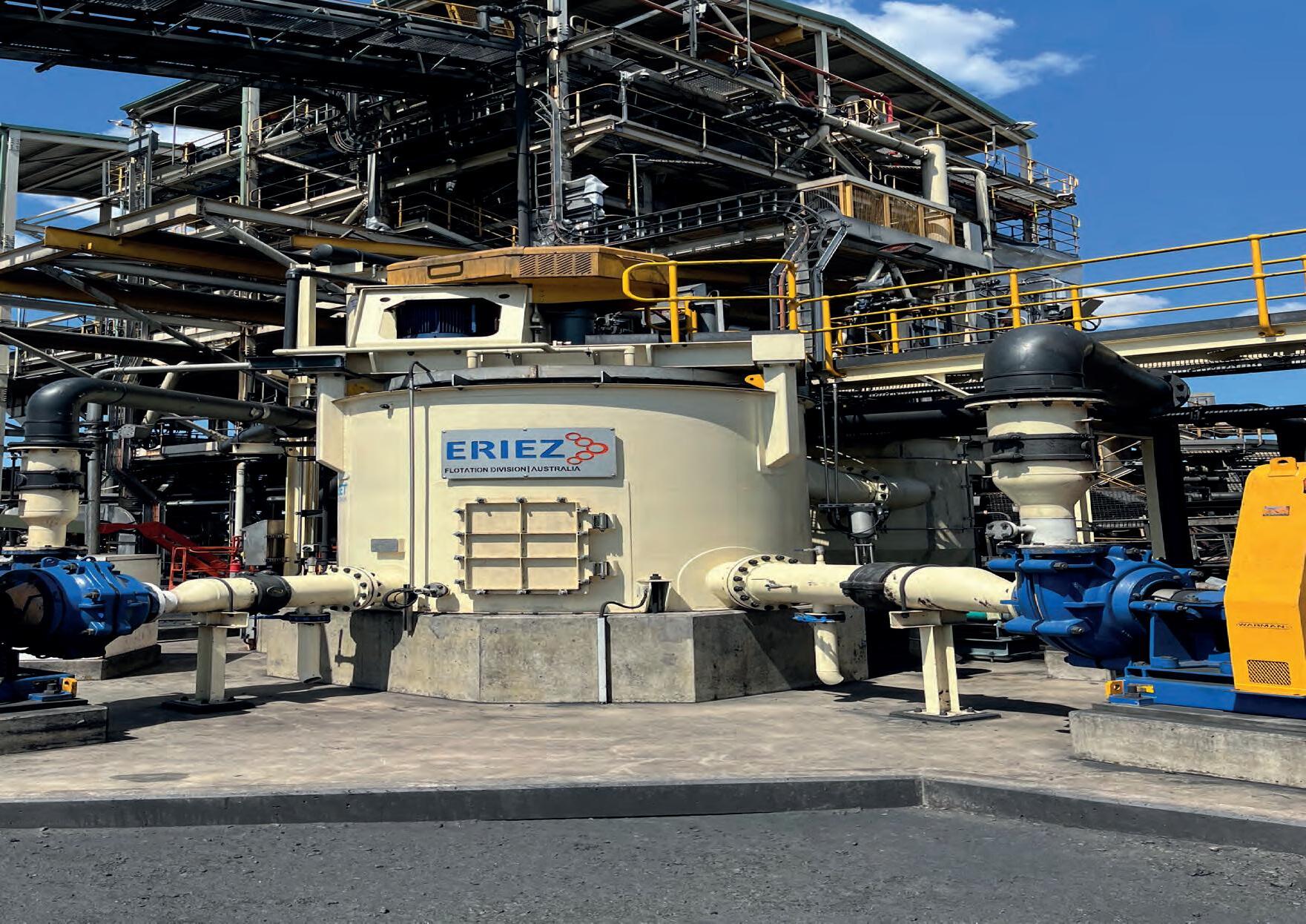
Froth flotation is a physico-chemical process, first introduced more than a century ago, that has revolutionised metallurgy and virtually every aspect of our economy and the modern world.
Formerly, extractive metallurgy was a costly enterprise, with only a few limited methods available for inexpensively concentrating valuable ore to a level suitable to make smelting and refining economical at a scale that
would touch the masses. Before this time, metals and alloys were largely used to make goods that would be considered luxury or ‘high tech’ items today. The discovery and industrial adoption of froth flotation around 1900, enabled the mass-scale development of metal sulfide ore bodies – such as copper, zinc, and nickel – and a significant increase in the service of these metals to mankind. An estimate of global copper production since 1900 by the US Geological Survey illustrates the rapid increase in the production and use of copper, which coincides with the development of froth flotation for porphyry copper ores
starting around 1900 (Figure 2). Curves for the other industrially significant base metals show comparable trajectories emanating from this starting point around 1900. With the advent of froth flotation, copper became a metal that could be used for modernising towns and cities around the world by way of electric motors and generators, transmission systems, telephones, piping and heat exchangers, among other familiar modern devices. We are all beneficiaries of this technological revolution.
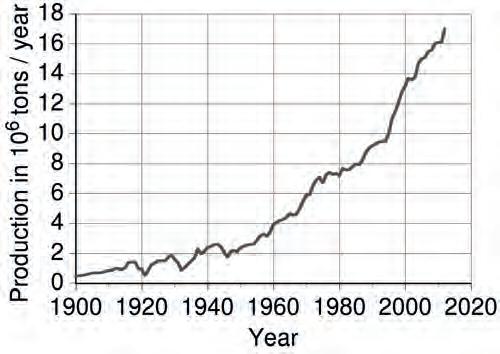
The conventional flotation process generally consists of adding fine particles of ore, with at least some surface exposed mineral, into water and adding air bubbles and kinetic energy, usually in the form of mixing. Under the right conditions, the bubbles will collide and attach to a hydrophobic mineral surface and provide enough buoyancy to lift the bubble-particle out of the pulp and into a froth phase, which can be recovered through a launder system. By repeating this step in multiple stages, also known as rougher/scavengers and cleaners, the target mineral can often be enriched by an order of 50 or more times.
Industrial research and practise have identified some of the most significant factors – which include the amount of surface exposure of the target mineral, bubble size, and surface-active chemical additives – that can adjust the hydrophobicity of the target mineral, density, particle size, electrochemistry, and hydrodynamics of the cell. All of these parameters need to be optimised together to achieve the best flotation performance.
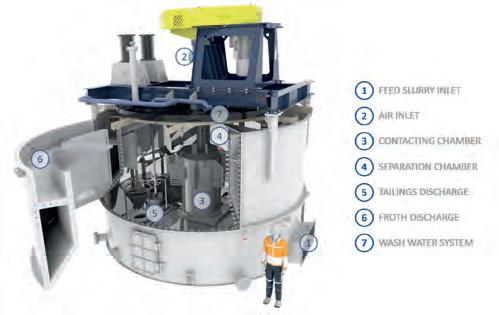
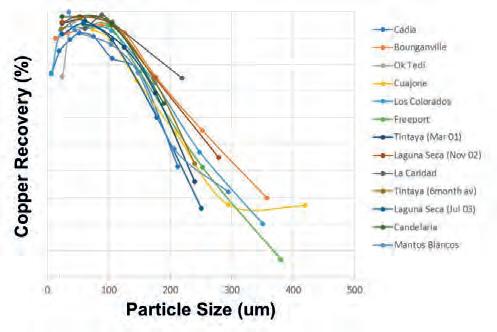
Industrially, this is a continuous process, consisting of cells or tanks in series. The tanks usually have a mechanism that provides mixing and introduces air. Mechanical agitation in a conventional cell achieves four functional objectives: keeping the solids suspended (so the cell does not sand), shearing the incoming air to produce fine bubbles, adding enough turbulent energy into the pulp for bubbles and hydrophobic particles to disperse and successfully collide to form bubble-particle aggregates, and providing a sufficiently quiescent fluid environment for the aggregates to rise successfully through the pulp. Efficient collisions of fine ore particles with bubbles require high energy to be successful, while recovery of bubble-particle aggregates into the froth generally requires low energy. In fact, excess turbulence in the pulp will cause bubble-particle aggregates to break apart and become lost. This phenomenon, known as drop-back, is one of the main reasons why there is an upper limit on particle size for conventional flotation. The mechanical energy added into the cells is therefore a trade-off for conventional mechanical cells.
This trade-off for conventional mechanical cells is illustrated by Vollert et al, who showed typical copper flotation performance by particle size for major operations that are using mainly conventional mechanical cells. Figure 3 illustrates this trade-off; there is a narrow ‘Goldilocks’ interval between 50 and 150 microns where conventional flotation gives a good performance. As the size is decreased below 50 microns, the recovery suffers because of low energy. On the other hand, the recovery suffers above 150 microns because of excessive energy and
Worldwide
Subscribe online at: www.globalminingreview.com/subscribe
15 South Street, Farnham, Surrey, GU9 7QU, UK
Subscribe online at: www.globalminingreview.com/subscribe
Subscribe online at: www.globalminingreview.com/subscribe
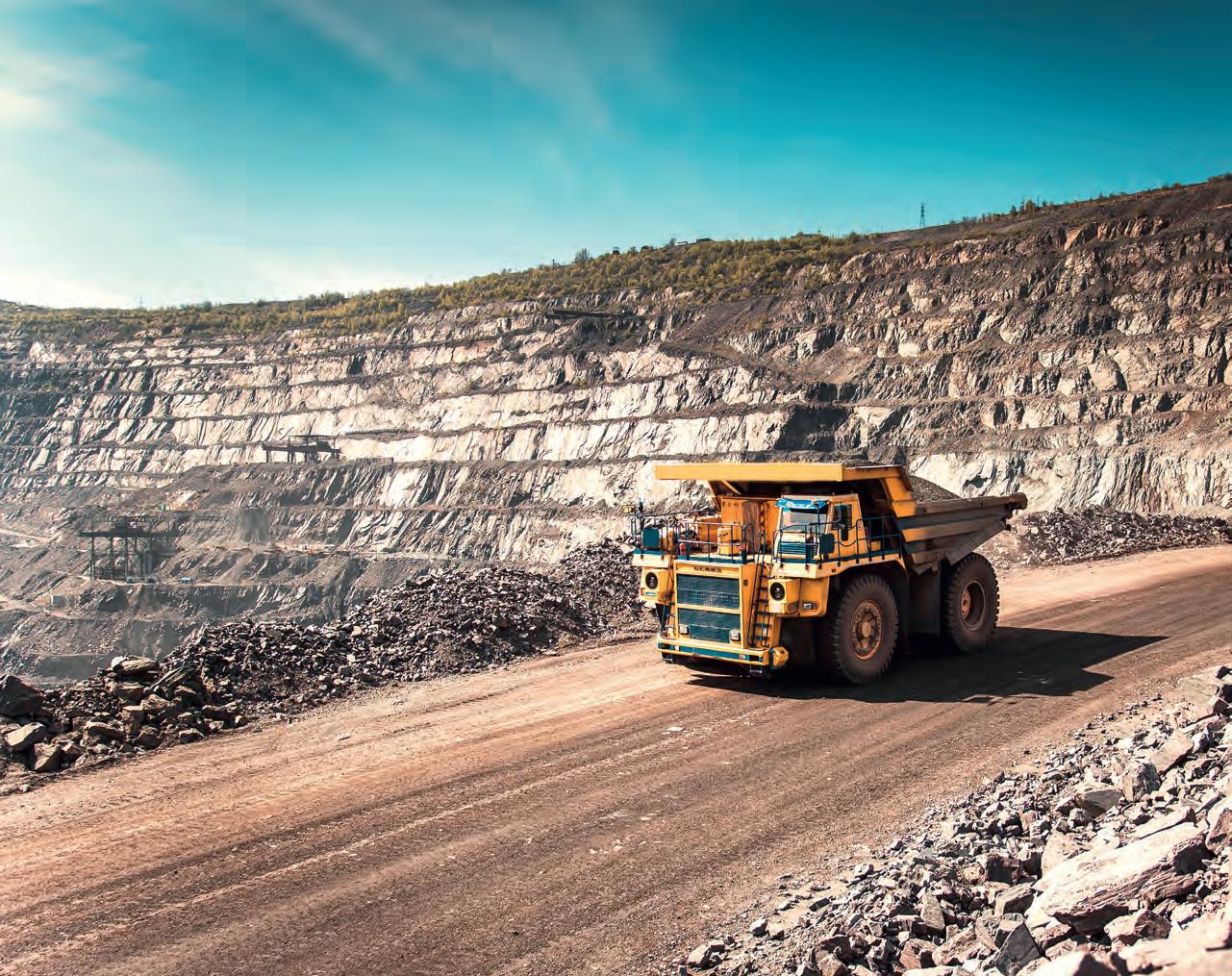


T: +44 (0)1252 718999 F: +44 (0)1252 821115
E: info@palladian-publications.com
15 South Street, Farnham, Surrey, GU9 7QU, UK
T: +44 (0)1252 718999 F: +44 (0)1252 821115
15 South Street, Farnham, Surrey, GU9 7QU, UK
E: info@palladian-publications.com
T: +44 (0)1252 718999 F: +44 (0)1252 821115
E: info@palladian-publications.com
a high liberation requirement of conventional cells. Audits of major copper producers have typically shown 80 – 90% of the mineral units carried in the flotation waste (or ‘tail’) stream are either in the fine or coarse fraction. This can account for 5 – 15% of the total valuable mineral units in the run of mine feed.
This trade-off exists because of the inherent conflict between achieving successful bubble-particle contacting and bubble-particle flotation in the same cell. To avoid the trade-off, Eriez developed a two-stage mechanical cell called the StackCell® approximately 15 years ago (Figure 4). The StackCell uses two compartments: a tank within a tank. The tanks are connected in series, and isolated from one another, except where the exit from the first tank [3] feeds the second [4], and they are operated in such a way that fluid cannot move back into the first tank after it has entered the second one. As illustrated, feed is delivered through a duct [1] into the first tank, also referred to as a ‘cannister’[3], consisting of a rotor-stator configuration, which mixes the feed slurry and air with extreme energy. The specific energy inside the cannister is more than 100-times higher than the average specific energy in a conventional cell, so bubble-particle contacting is optimised. The feed travels from the bottom to the top, with a residence time distribution that is designed to approximate a plug-flow in a highly turbulent mixing environment with short residence time, on the order of several seconds. This high energy input does not cause drop-back of coarser particles because bubble-particle flotation only happens in the second tank.
Aerated pulp, ready to be floated, is pushed into the second tank based on a small positive pressure between the tanks. The second tank [4] is operated without mechanical agitation and separates the bubble-particle aggregates into a froth phase, which is recovered in a launder [6]. Water wash [7] can be used to increase the grade.
The StackCell has now been successfully introduced into coal, lithium, nickel and copper applications, as well as applications where the flotation rate is limited by kinetics. A StackCell can typically achieve the same metallurgical performance as a conventional mechanical cell that is 3 – 5 times larger. This allows StackCells to use less energy and operate in a smaller footprint.
Concerning the limitation in floating coarse particles, Klassen and Mokrousov added the following prescient commentary in their classic Flotation textbook more than 60 years ago: “In most cases, complete liberation of minerals can be obtained with particle sizes much larger than those that can be floated. The ore is therefore ground finer that is necessary for liberation, simply to enable flotation bubbles to lift these particles into the froth. If it were possible to float larger particles with high efficiency, then the cost of grinding, filtration, thickening, and drying would be much lower.”
More than 20 years ago, Eriez developed the HydroFloat® Coarse Particle Flotation (CPF) machine to overcome this weakness of conventional cells. The HydroFloat is a flotation cell that uses a fluidised bed to create lift and increase buoyancy with reduced turbulence. This unit has been used for mined fertilizer flotation for approximately 20 years, and in the last 10 years it has been tested and adopted in the base metal and lithium markets.
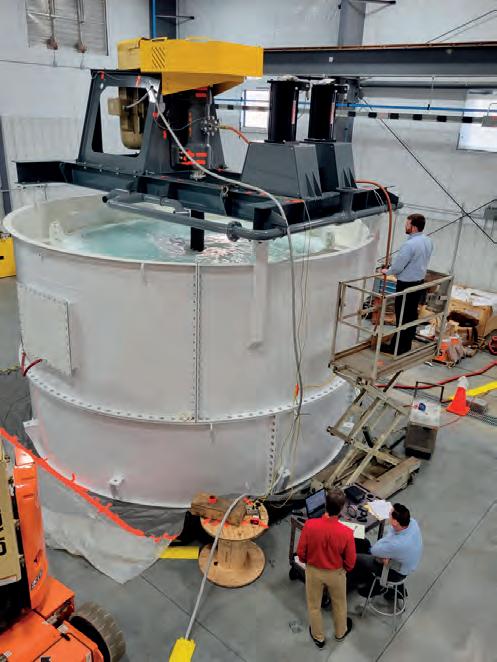
The first industrial application in copper was at Newcrest’s Cadia Valley copper-gold mine in 2018. The Newcrest team extensively tested and piloted this application, and the result has been that the company is able to re-process its waste stream, recovering valuable coarse ore, and also increase the grind size from its mills to increase throughput. Since then, HydroFloat CPF cells have been installed at a number of sites, including an expansion at Cadia Valley and installations at Anglo American’s El Soldado, Quellaveco, and Mogalakwena concentrators. True to Klassen’s prediction, modern practitioners of the HydroFloat have found that floating at a coarser size, typically two times coarser than required for conventional flotation, allows for the reduction of grinding energy from 30 – 50%, and reduced costs for de-watering as well as increased water recovery.
Froth flotation has indeed had a revolutionary impact on the world, and even after 100 years of practise, there are still innovative improvements that are allowing mankind to extract the massive quantities of green metals required for the net-zero carbon era. On the machine side, Eriez and its operations partners – such as Anglo and Newcrest – have commercialised two new cells, the StackCell and the HydroFloat, that are allowing miners to expand the range of flotation, increase recovery, reduce energy footprints and improve water use, resulting in more profitable and sustainable projects.
Jason Ludwig, Regal Rexnord, USA, reviews several examples of how significant savings were generated by selecting the right type of bearing.
Mining and aggregate businesses depend on a veritable fleet of equipment and machinery to maintain their constant, round-the-clock operations. Keeping these tools in working order is no small task, especially given their working hours and conditions. As far as field applications go, the mining industry offers some of the most harsh and abrasive environments in the world. Therefore, it should come as no surprise that operating costs remain one of the most critical factors affecting mining companies’ profitability. In an attempt to minimise these expenses, businesses will often allocate large portions of their budgets to regular maintenance and repair.
But, often overlooked, yet ubiquitous components found in nearly every piece of equipment commonly used in the mining industry – i.e. bearings – can play a big role in lowering operating costs and downtime losses.
Why bearings?
Bearings are essential components in the mining and aggregate industries, providing support and facilitating movement for heavy-duty equipment. From chain mills to conveyors, anything with a motor or a pivot point is going to
include a bearing. This is an important consideration in maintaining a profitable operation, as mechanical failures will often occur at points that experience the most stress, of which bearings are almost always at the forefront.
Bearings are not typically a highly designed aspect of machines. To maintain competitive pricing, manufacturers sometimes cut corners on important components that keep machines operating in harsh environments, such as bearings with the proper seals. Bearing failures frequently occur because a seal was compromised, which allows contaminants to enter the bearing and cause damage. The resulting imperfections in the bearing generate excess heat during operation and the bearing can seize up or fail completely. This results in additional damage to a gearbox or pivot point, and eventual downtime for repairs. With some of the larger mining operations estimating downtime losses at US$5000/min., this situation is to be avoided whenever possible.
Selecting the bearings that are appropriate for the application in which they will be used is crucial to ensuring reliable performance, minimising downtime, and extending the service life of equipment. This article examines several cases where mining and aggregate companies experienced
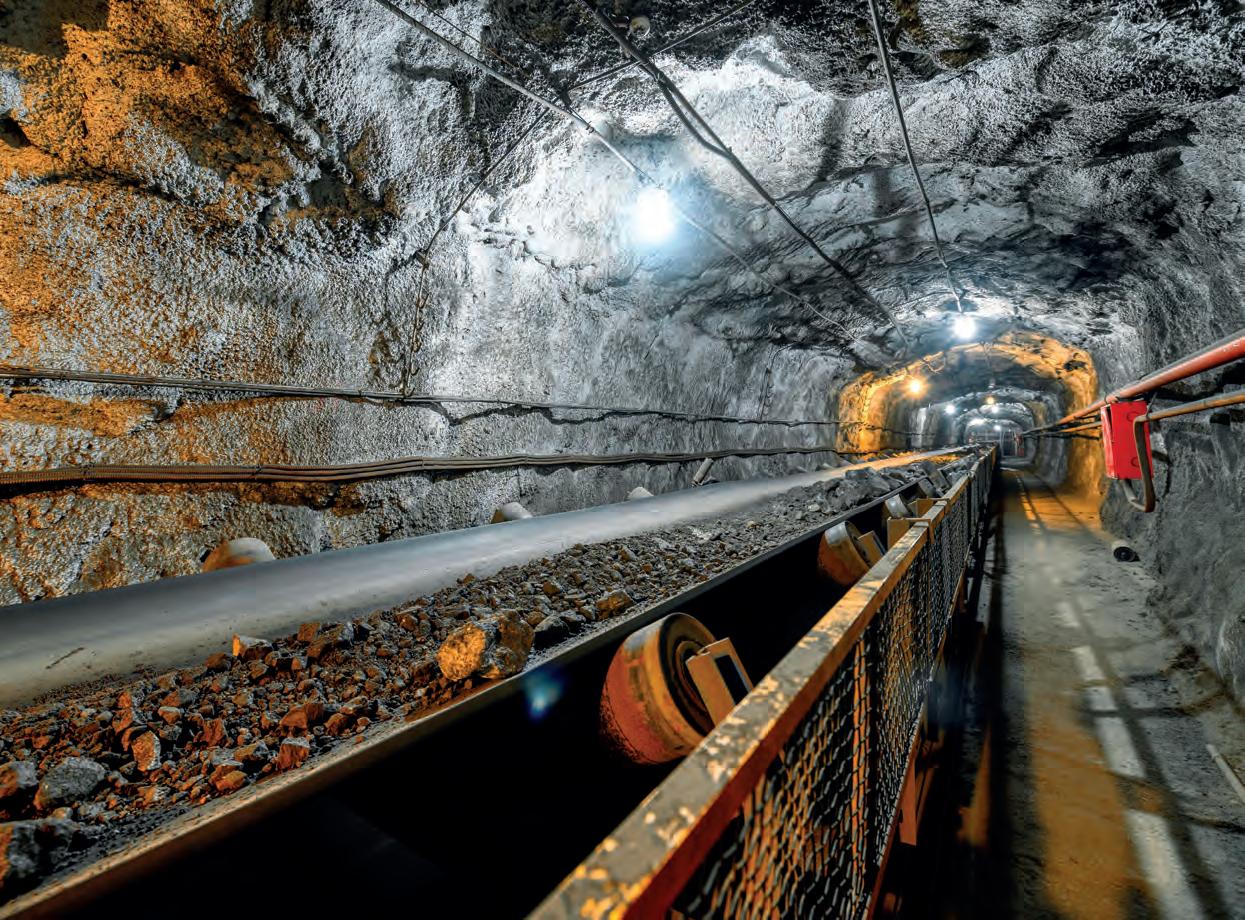
issues with their operations due to the insufficient bearings in their equipment, and how upgrading to bearings better suited for the task resulted in significant savings.
Phosphate processing chain mills
A facility processing phosphate for use in animal nutrition was using chain mills to pulverise partially crushed and cleaned raw material. In the mills, chains inside spinning drums broke down the raw material into particles small enough to be used in animal feed products. Each drum turned on a 3 – 15/16 in. shaft, and shock loading on the split-block SAF-type bearings supporting the shafts was severe enough to cause the bearings to fail after as little as three to four days of service. Replacement costs and downtime losses were beginning to accumulate.
To address the problem, the facility replaced its SAF-type bearings with higher-capacity roller bearings. The upgraded bearings were chosen based on their design that provided better sealing to protect against possible contamination, including corrosive and abrasive damage from long-term exposure to the phosphate material.
The company anticipates significant cost savings from reduced downtime and repair costs – more than US$39 000 annually according to a cost saving analysis. As bearings on additional mills fail, the company plans to replace them with the new bearing design.
Screw conveyor drive for coal transportation
A business was experiencing failures in its screw conveyor’s medium duty, 4-bolt flange bearings approximately every other day. Upon examination, it was determined that the bearings’ contact seals were responsible for the failures as they could not withstand the abrasive and corrosive contamination in this coal conveying application.
Testing a solution, the business replaced two existing bearings with an upgraded alternative designed with high-quality felt seals for the harsh application. The two new bearings ran for six months in the dust coal environment without issue. The company conducted an analysis, determining that the two bearings alone would save over US$12 500 annually, not including downtime costs. Going forward, the company has decided to specify only the highly effective felt seal bearings on all its screw conveyor drives.
Aggregate material conveyors
The Type E style bearings in an aggregate plant’s material conveyor counterweight pulley were failing frequently, causing excessive unplanned downtime. While in operation, the bearings were exposed to gritty water run-off and misalignment caused by the deflection of the belt loading. After inspecting the failed bearings, plant workers found evidence of water ingress and contamination. They determined that the misalignment was distorting the housing-mounted seals on the bearings, allowing water and other contaminants to seep in and cause damage.
The plant decided to replace its existing Type E style bearings with a tapered roller bearing capable of self-alignment with race-mounted contact seals. The design of the new bearings allowed seals to remain in positive contact with the inner ring, even when the bearings operated within an
allowable range of misalignment. For extra protection against environmental conditions, the plant selected a bearing design with fluoropolymer housings and collars.
The new, more robust bearings demonstrated superior performance in the application’s wet and dirty conditions. They increased production uptime, while reducing maintenance and replacement part costs by delivering three times the life of the former bearings, saving the plant over US$35 000.
Another aggregate producer experienced significant savings by replacing its bearings. It was plagued with downtime using SAF-type bearings on its conveyors used to transfer wet fines. The abrasive slurry being transferred by the conveyor was causing its bearings to fail in just three weeks of use due to contamination ingress. The company addressed the issue by also replacing its SAF-type bearings with heavy duty tapered roller bearings capable of withstanding up to three degrees of positive or negative static shaft misalignment while maintaining seal integrity. And after five weeks of operation, the upgraded bearings showed no signs of issues and continued to resist contamination ingress. The aggregate producer estimated savings from reduction of downtime at over US$50 000 in maintenance labour and replacement part costs.
Limestone radial stacker
An aggregate plant was building piles of 3/8 in. limestone for distribution using a radial stacker conveyor. Due to the nature of the material, the bearings on the conveyor tail pulley were being constantly exposed to moisture and limestone dust, which compromised the bearings’ substandard seals allowing the mix to flow through and cause failure every four to six weeks.
The aggregate plant addressed this issue by upgrading the conveyor with ball bearings equipped with a double-lip contact seal to keep contaminants out. After three months of continuous operation without any issues, the plant changed out all other failed bearings with the ruggedised replacements. By increasing bearing life, and thus conveyor uptime, from weeks to months, the aggregate plant quickly realised significant savings from decreased downtime and maintenance costs.
Conclusion
These application examples prove that not all bearings are created equally, and that this often-overlooked component plays a critical role in keeping mining and aggregate operations up and running.
All bearings will eventually succumb to the rigors of operation; depending on the speed of the cycle and the hours they operate, some sooner than others. But by selecting bearings that are better suited for the harsh conditions in which they will operate, companies can extend their service life, thereby minimising downtime and service costs.
When selecting a bearing provider, mining and aggregate companies should choose an organisation that features products specifically designed for their industry, as well as skilled application engineering for custom jobs. Selecting a bearings provider based on the lowest price often results in the lowest quality. When it comes to bearings, especially for harsh applications, upfront cost will usually save backend costs in abundance.
Alistair Jessop, Vivo Energy, South Africa, discusses the potential for renewable energy in Africa's mining sector and how solar hybrid solutions can help the industry become more sustainable.

Vivo Energy currently operates in 23 African countries as a leading provider of fuels and lubricants. The company has recently announced plans to partner with Engen, which is currently pending regulatory approvals and fulfilment of conditions precedent. On completion of the transaction, Vivo Energy will add five more countries and become a Pan-African energy champion.
Although fuel and lubricant sales are the core business of Vivo Energy, its power division has recently completed the pioneering Nampala gold mine solar battery hybrid energy project in Mali, which came onstream in July 2022. The project integrates fully with the mine’s existing power infrastructure, including its existing thermal plant, providing an uninterrupted supply of secure energy to the mine. By reducing the mine’s carbon footprint by approximately 60 000 t over 10 years, as well as cutting the cost of energy by displacing
over 30% of the diesel used by the thermal generation plant with low-cost, reliable, renewable energy, this project has demonstrated the potential for renewable energy to play a significant role in the mining sector.
Following the success of this project, Vivo Energy and its shareholder Vitol have committed to continue to invest in
solar hybrid battery solutions and thermal solutions to mines in Africa, reducing their cost of power and CO2 emissions. The business plan of Vivo Energy Power Division is to invest in the power solutions using only equity. The Nampala solar hybrid project, was funded 100% on the balance sheet of Vivo Energy. It features a photovoltaic solar plant and a battery storage system and provides a reliable source of electricity for the mine.
Throughout the development and construction of the Nampala solar hybrid project between 2019 and 2022, many challenges were faced globally, regionally, and nationally. Despite these challenges, the project was delivered close to budget. This was achieved through a number of factors, including the appointment of Sterling and Wilson, a world class contractor, to engineer, procure and construct the project. The Vivo Energy Mali team, based in Bamako, applied its strong in-country and regional expertise and knowledge of the complexities, logistical constraints, and regulatory environment in Mali and beyond to support the project. Finally, the Vivo Energy Power team – which has previously developed, financed, and constructed over US$1.8 billion of solar projects across Africa – utilised its knowledge in the development, commercial structuring of the contracts, and the integration between the stakeholders from conceptualisation through to the operation and maintenance of the project.
The Nampala mine is 90% owned by Robex Resources Inc. and has a 10% ownership by the Malian government. At the last Mining Indaba in Cape Town earlier this year, Robex was proud to receive the ESG Junior Minor award, where they graciously acknowledge the benefits of working with Vivo Energy to achieve the Nampala solar hybrid battery solution; a major step forward in meeting their ESG goals.
On the back of the success at the Nampala mine, Vivo Energy and Robex have signed an exclusive agreement to provide a solar hybrid solution to the Kiniero gold mine in Guinea, which is roughly four times the size. This project is expected to provide over 40% of the power requirements for the gold mine, displacing 40% of the mine’s fuel requirement for power and reducing CO2 emissions by 27 000 tpy. Again, Vivo Energy will provide this solution on an all equity basis, ensuring the mine receives its energy on time using a simple contracting structure.
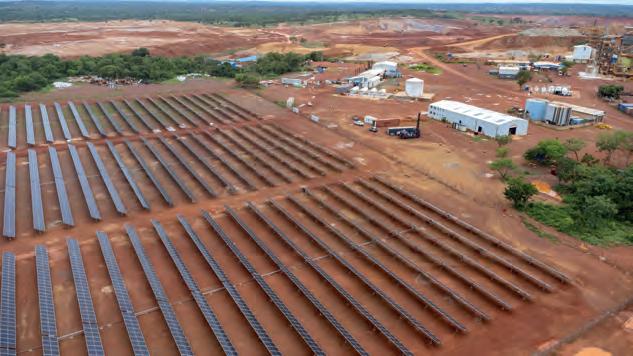
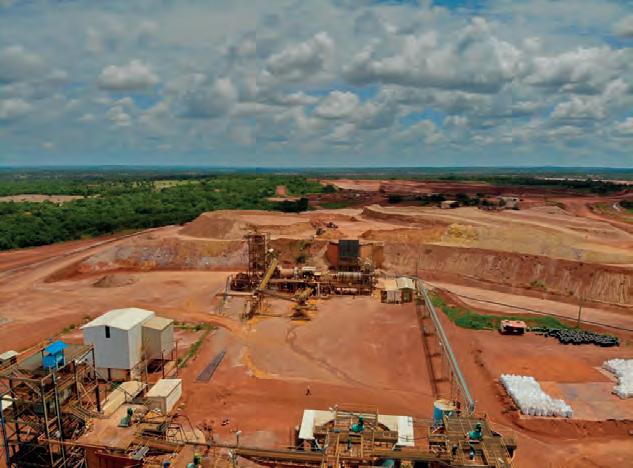
Robex chose its partner to develop this solar hybrid project due to the excellent service provided by Vivo Energy, which has
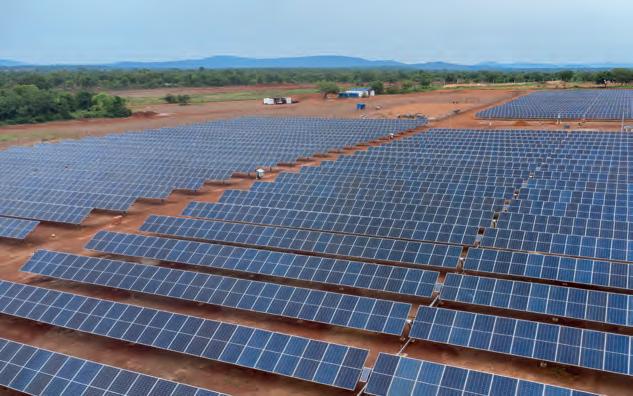
more than 12 years of operational experience and conducts commercial operations across Africa. Vivo Energy had previously supplied fuels and lubricants to the Nampala gold mine since the start of its commercial production in 2017.
The mining industry has long been criticised for its environmental impact and reliance on fossil fuels. Traditionally, power at mining sites is generated from fossil fuels, such as: coal, natural gas, and diesel generators. However, the recent project in Mali highlights the potential for renewable energy to play a significant part in the sector.
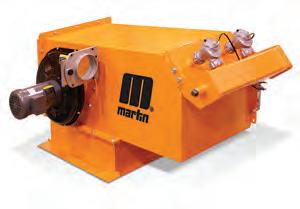
Vivo Energy is dedicated to supplying highly reliable electricity and energy solutions to mines though a bespoke power purchase agreement (PPA), along with a Vivo Energy fuels and lubricants contract.
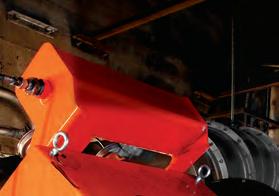
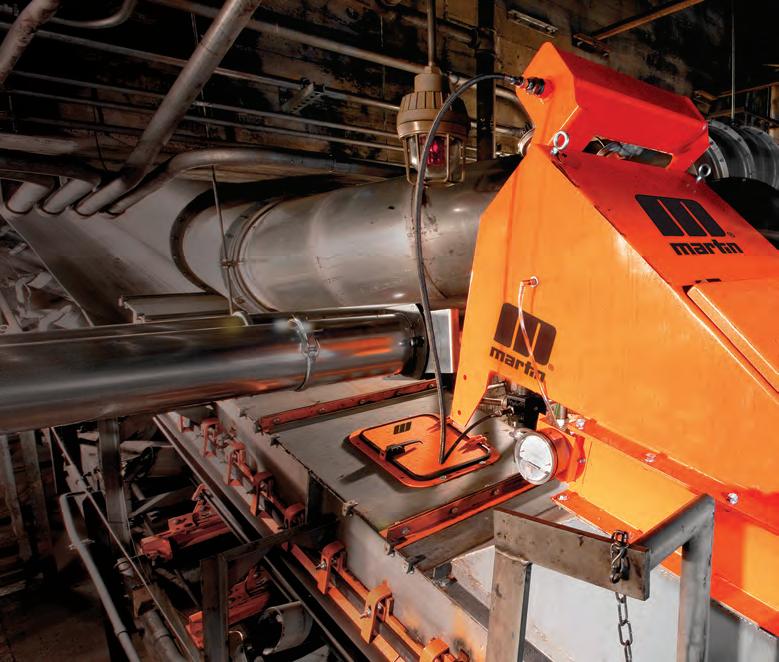
The use of renewable energy at the Nampala gold mine has numerous benefits. For one, it reduces the mine’s carbon footprint, contributing to the fight against climate change. The solar hybrid system also reduces the mine’s reliance on fossil fuels, which are a finite resource and can be expensive to transport to remote locations.
Additionally, the use of renewable energy at the mine can improve energy security, as it decreases the mine’s reliance on a single source of power. This is particularly important in regions where access to electricity is unreliable, or where there is a risk of fuel supply disruptions.
Solar power plants have become increasingly important at mining sites. The most commonly used renewable energy source at mining sites is solar power, followed by wind and hydro. In recent years, the use of renewable energy at mining sites has increased due to the need for more sustainable and cost-effective energy solutions, as well as government incentives and regulations promoting the use of renewable energy.
The Nampala gold mine is not the only mining operation to turn to renewable energy sources. Other mining companies around the world have also implemented solar, wind, and other forms of renewable energy to power their operations. These projects demonstrate that the mining industry can be a leader in the transition to a low-carbon future.
Solar power projects, in particular, are becoming increasingly popular across the world. In recent years, mining sites across Africa, such as the Houndé gold mine in Burkina Faso, have integrated solar power plants as an energy source. The strong economic rationale being the potential to reduce power costs by 20 – 35% and the environmental rationale of reducing carbon emissions by 30 – 50%, in line with Scope 2 of the Greenhouse Gas Protocol.
The solar hybrid project at the Nampala gold mine in Mali is a significant step forward for the mining industry. It highlights the potential for renewable energy to play a key role in the sector, while also reducing the industry’s environmental impact and improving energy security.
The sprint to move away from internal combustion engines in personal vehicles has begun. Through organic consumer uptake, governmental regulations, and social pressures, the world is preparing for an era away from fossil fuels and entering the early stages of a transformative shift in transportation. Electric vehicles (EVs) hold the promise of maintaining the freedom and independence that society has come to see as essential, while dramatically reducing the negative environmental impact of traveling by car. However, a central critical issue remains: how to manufacture these vehicles when their makeup and components are drastically
different from the internal combustion engine (ICE) cars that have dominated the market since the late 19th century. The entire lifecycle of modern EVs differs radically from their ICE relatives. Consequently, the approach to sourcing materials, manufacturing, supply chain, consumer utilisation and end-of-life recycling must quickly adapt. Until now, this new approach has not needed to be a coordinated and defined effort. However, as car manufacturers, consumers, and governments set their sights on a carbon-neutral future by specified deadlines in the 2030s and beyond, a more robust plan is necessary.

Jordan Rutledge, TOMRA, Australia, evaluates the emerging role of sensor-based particle sorting in the race to electrify vehicles.

A major challenge: Sourcing the raw materials for EVs
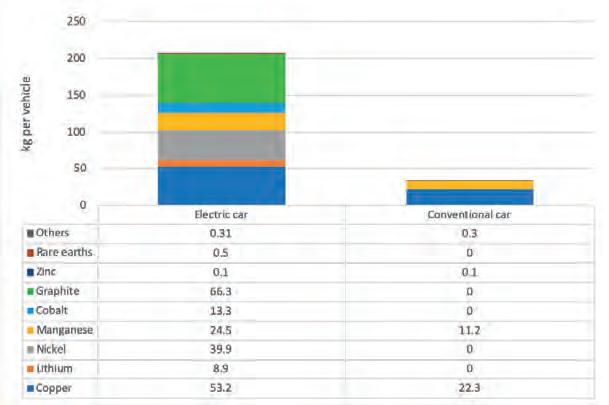
Of course, the most significant difference between ICE vehicles and EVs is where the energy to power the car is generated. Combustion engines convert gasoline or diesel into energy, while EVs run on electrical energy stored in a rechargeable battery. This difference in energy storage and conversion radically changes the components and materials needed to manufacture EVs. While steel and aluminium make up many components in ICE cars, EVs require a variety of metals and minerals. Figure 1 illustrates how different raw materials necessary for electric vehicles are.1 If aluminium and iron are excluded, an electric vehicle will take more than six times the metal content by weight than a conventional car. Graphite, nickel, and copper make up most of the metal consumption by weight for an EV. However, the most notable metals are lithium, rare earths, manganese, and cobalt needed for the rechargeable battery pack and motor. Production of some of these metals is constrained by mine location, available reserves, processing challenges, or a combination of these factors.
Governments have recently recognised the necessity of sourcing these metals and minerals to secure the supply of EVs. The United States Geological Survey (USGS) was tasked with creating a list of critical materials in 2018. The list was updated in 2022 in accordance with The Energy Act of 2020, which defined a critical mineral as a: “mineral or mineral material essential to the economic or national security of the US and which has a supply chain vulnerable to disruption. Critical minerals are also characterised as serving an essential function in the manufacturing of a product, the absence of which would have significant consequences for the economy or national security.”2 Aluminium, cobalt, dysprosium, graphite, lithium, manganese, neodymium, nickel, and zinc — all major metals for the production of electric vehicles –were included in the 2022 list of critical materials.
Other parts of the world have also recognised the criticality of a number of raw minerals and materials and are putting plans in place to secure an electric future. In 2022 alone, the European Union announced the European Critical Raw Materials Act, while Australia’s Department of Industry, Science, and Resources published the article: ‘Australia’s Critical Minerals Strategy: A Discussion Paper.’ Both documents are heavily focused on critical raw materials to produce electric vehicles. The message is clear – accelerated change in the way these critical minerals and metals are sourced and used is crucial to securing our way of life.
When evaluating the supply of critical metals and minerals for electric vehicles, the first considerations to make are the location of the reserves and whether they can easily be mined and processed where they naturally occur.
Lithium is dispersed across the world, with the largest reserves located in Chile, Australia, Argentina, China and the US; and Australia being the largest producer of lithium in the world.3 The situation for zinc and copper is similar, with major reserves sitting in Australia, China, South America, North America and Europe, and production throughout. Rare earth elements are unevenly dispersed, with China alone accounting for almost 38% of the world’s reserves and over 50% of mine production.4
Cobalt also proves to be highly challenging to source sustainably and ethically, as nearly half the reserves and 70% of the mine production occurs in the Democratic Republic of Congo.5 Aside from the physical location of the minerals, the ease of mining and processing from social license and technical standpoints are major considerations.
Shifting from a fuel-intensive to a material-intensive system
The transition from ICE vehicles to fully electric vehicles is driven by the potential to significantly reduce the negative impact on the environment and climate. The International Energy Agency (IEA) has emphasised a
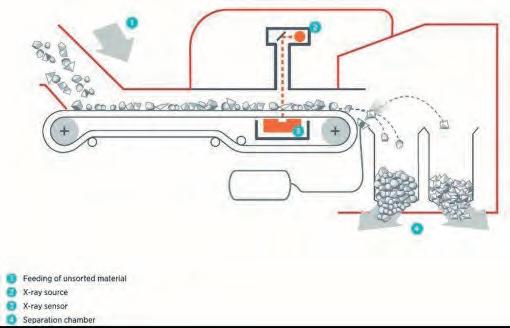
critical point: “The transition to clean energy means a shift from a fuel-intensive to a material-intensive system.”6 This evolution to cleaner energy vehicles has the potential to be a zero-sum game, where the resources required to manufacture EVs outweigh the actual benefits of switching away from fossil fuels. In order to guarantee that the adoption of EVs as the primary means of transportation is beneficial for the environment and society as a whole, it must be ensured that the minerals and metals used to manufacture them are produced with the least amount of energy, waste, and resources possible.
Recycled materials from secondary sources have potential for the least negative impact. However, currently there are simply not enough recycled metals available to keep up with demand. While lithium battery recycling is in practice, the relative number of batteries available to recycle is insufficient to support the production of all the new EVs that will hit the market in the next years. This shortfall can only be filled with mined metals and minerals.
Sensor-based sorting: A role to play in meeting the demand of raw materials for EVs
While existing mines will aim to ramp up production to higher and higher levels, the demand for these metals cannot be fulfilled by existing mines alone. Benchmark Mineral Intelligence estimates that by 2035, an additional 384 mines would be necessary to keep up with demand for the minerals and metals essential to EV production. With the expansion of
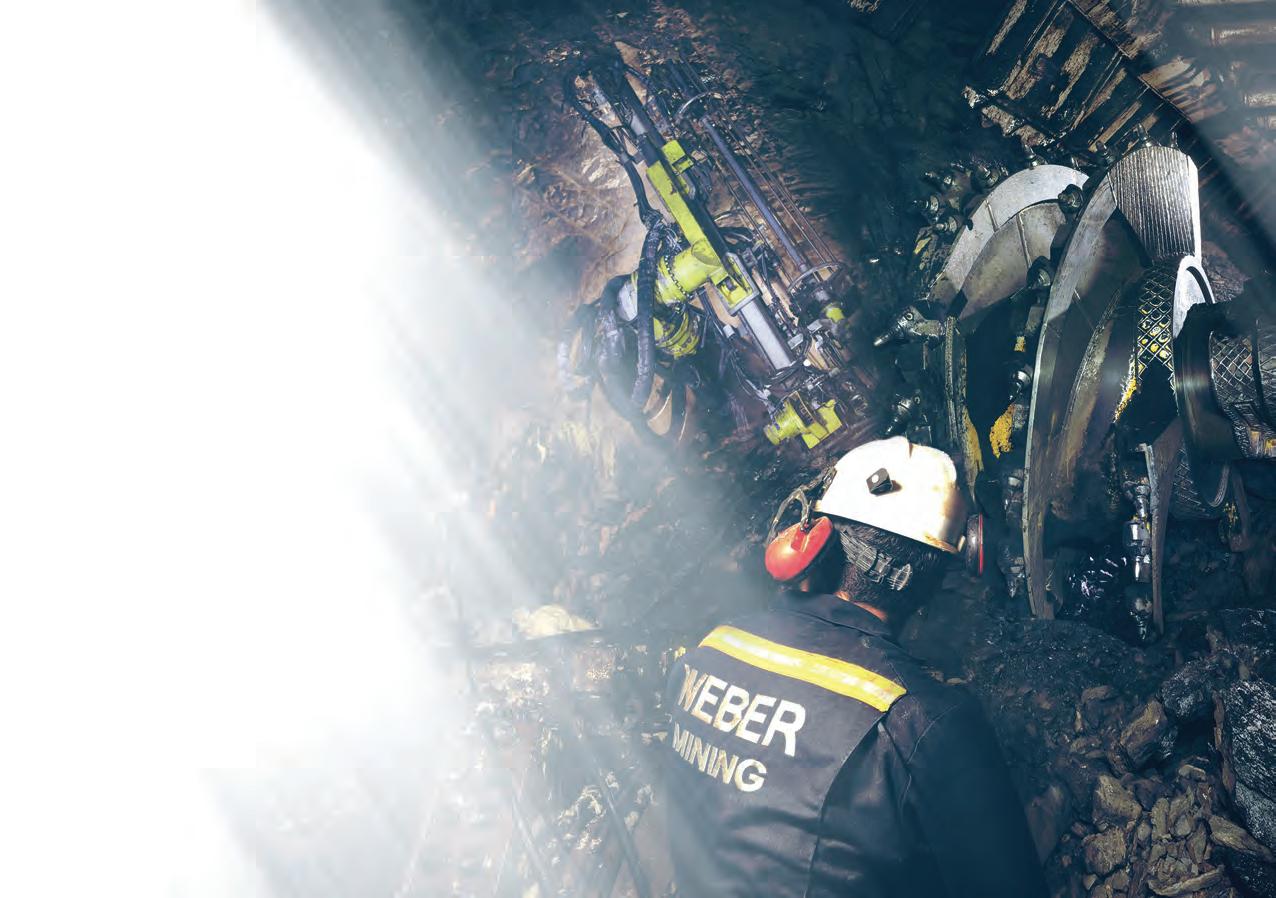
current brownfield projects and the introduction of new greenfield mines, there is vast opportunity to produce the metals that are needed in the most economically and environmentally sustainable way possible. When minerals and metals are mined, a significant amount of material must be handled and processed in order to extract the valuable material.
Sensor-based sorting (SBS) is poised to play a central role in ensuring that the most value possible is extracted from every resource. Current sensor-based sorting technology implemented in the mining industry utilises sensors to detect and image individual particles, which are separated into different fractions by compressed air. An array of sensors is utilised widely across the industry, including colour cameras, LASER, Near Infrared (NIR), X-Ray Transmission (XRT), and electromagnetism (EM). Figure 2 illustrates the basic working principles for an XRT sorter. Material comes in from a vibratory feeder that spreads it evenly onto a belt moving at approximately 3 m/s. The material on the belt travels over the X-Ray sensor where it is imaged. Within milliseconds a computer analyses the image of each particle, determines which are product or waste, and a separation is made with hundreds of air valves along the width of the belt.
SBS has been utilised in the mining industry since at least the mid-20th century, and became more widespread after the 1980s in the industrial minerals and filler industries. Since then, technology advances and rapidly declining grades of resources have allowed SBS to take a more established role within mineral processing. With regards to battery metals, it is


playing the most significant role in lithium mining and processing, where it is estimated that lithium production will need to grow seven-fold from 2020 to 2030 for the lithium supply to meet demand.7
For lithium to make it into an EV car battery, it must first be mined – either from evaporative salt ponds or hard rock mines. The minerals containing lithium must be purified and refined to make the cathodes that are a major component in battery cells. Spodumene is the main hard rock lithium mineral, and it takes multiple steps of beneficiation and purification to upgrade the ore. Often a combination of gravity separation methods, flotation, and magnetic separation are used to generate a pure concentrate. However, there are some problematic minerals found in pegmatitic spodumene ores that hamper this conventional process. Iron contamination from metasediments, like basalt, cause major issues – from affecting dense media separation (DMS) to the performance of the flotation cells. Basalt contamination is particularly challenging for DMS, where the density of basalt is close to that of spodumene – diluting the
overall spodumene concentrate from DMS. The current solution is to avoid basalt during the mining process and selectively mine around the high-basalt areas, leaving valuable material behind and adding to the cost and complexity of the mining operation. SBS provides a unique solution to this issue, by enabling efficient mining methods followed by sorting the basalt contamination out at a coarse particle size.
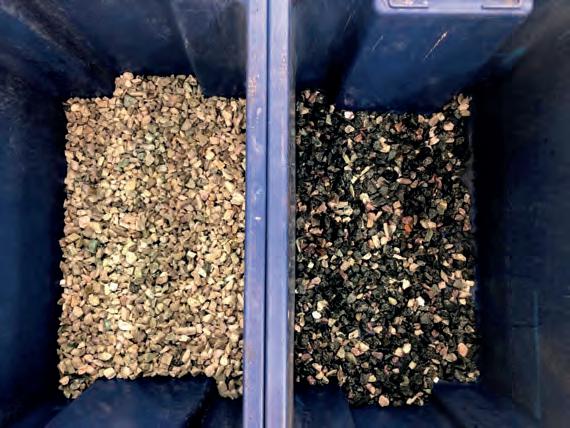
Multiple sensor techniques are capable of separating basalt from spodumene. There is a clear visual difference between the very dark basalt and the lighter spodumene, for which colour sorting can be used at particle sizes from 6 mm to 150 mm. Similarly, for LASER and NIR sensors, the difference between the sensor response and imaging is big enough to distinguish between the spodumene product and the basalt waste.
Figure 3 shows an example of XRT sorting the DMS spodumene concentrate where basalt is sorted from the spodumene to create a cleaner product.
Galaxy Resources Ltd’s Mt Cattlin mine in Western Australia experienced basalt contamination issues with its DMS, and, after testing different optical sorters back in 2019, chose TOMRA’s PRO Secondary LASER. Galaxy runs two different particle size ranges, 14 – 25 mm and 25 – 75 mm, which have recovered lithium value from previously stockpiled contaminated ore and generate a concentrate with less than 4% iron. Figure 4 displays an overview of the operation.
Hundreds of tonnes of test work have shown that XRT is also an excellent solution for basalt and other high iron mineral removal. In this case, the atomic density difference between basalt and spodumene is significant enough to allow for separation.
Pilbara Minerals is currently installing the world’s largest sorting plant in lithium for their Pilgangoora project which should be completed end of 2023. Looking to the future, multiple additional brownfield and greenfield lithium miners have tested and seen positive results with sensor-based sorting in accessing the most value from their ores and will implement SBS technology.
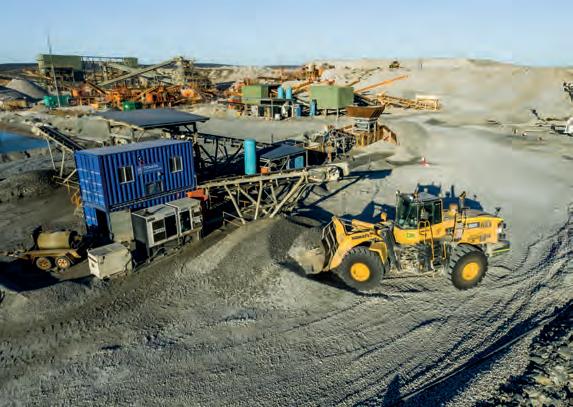
Conclusion
The benefits of SBS for battery metals extends further than basalt removal from lithium ores. Extensive test works and multiple installations have shown that SBS can be utilised for nickel, copper, manganese, rare earth elements, and more. SBS has been shown to reduce the amount of tailings by separating coarse waste up front in the process, so that energy, water, and chemicals are not used on waste. When used on stockpiles, value is captured from marginal or below-grade material. SBS can also be used to grade material and generate different purities/grades of products. SBS has proven to be one of the tools capable of reducing the environmental impact of mining and processing, while providing the metals and minerals needed for the transition to an EV dominance.
References
The geological conditions and mine-related impacts can cause rock bursts or large-scale cave-ins, challenging each mine operator. These cavities can lead to production stoppages and hindered extraction. To prevent more severe problems, continue production with minimum delay and restore workplace safety, those cavities must be filled as soon as possible. Weber Mining offers phenolic and silicate foam products with different technical characteristics for individual solutions in mining and tunnelling.
Phenolic foams
Phenolic foams are high-expanding, two-component foams designed to fill large voids and cavities rapidly. The benefits of this technology are time-saving and safety increases compared to classic filling. Designed in the 1980s especially for cavity filling when roofs collapse in the longwall, the technology has been improved by various expansion ratios, safer chemistry, and a longer shelf life of the components involved. There are 10 different variants available for each specific requirement.
Due to the high expansion rates of the Rocsil® foam, complete cavity filling is assured. This allows for the containment of the surrounding strata in exposed cavities, thus containing

further self-mining or falls of ground. Due to the expansion of the foam and assurance that the cavities will be filled entirely, containment of the excavation is ensured due to the active filling support of the foam. The foam is fire resistant, with no shrinkage, and has the benefit of increased work safety.
The foam is pumped into the cavity by a pneumatic pump with a preset mix ratio of the two components: resin and catalyst. A mixing gun merges the components shortly before the product emerges from the pipe and is placed. The foaming starts immediately, which enables a quick cavity filling with minimum product input. The expansion ratio varies depending on the desired compressive strength of the final product. Cavity-filling foams enable a cost-effective, time-saving, and safe cavity-filling solution.
Case study
The mine needed to connect two galleries (access A and access B) to improve traffic. This new roadway is critical as on access A, the mine has its underground offices and mechanical shops. Direct access to this area would accommodate the newly developed area in access B.
The first collapse
The mine started its gallery development from access A toward
Anthony Ferrenbach, Weber Mining & Tunnelling, Mexico, details how cavity filling with foam product can be safer than using other methods and delves into a case study where foam filling was used to great effect.
access B; however, 30 m before connecting, a rock burst occurred, generating a 600 m3 cavity. Since the rockfall was ongoing, removing the fallen rock from the ground to facilitate the installation of sets was impossible. Therefore, an alternative method had to be considered to stabilise the cavity, while minimising personal exposure and thereby improving operator safety.
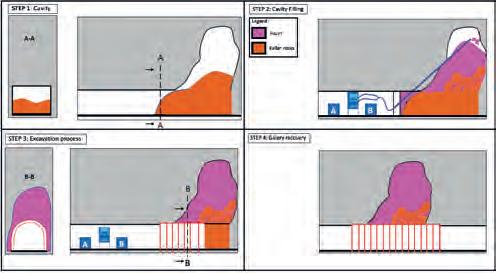
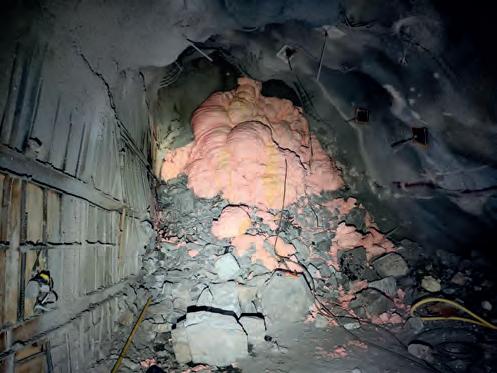
Phenolic foam was chosen and injected from afar of the cavity. This technique has been used to great effect worldwide in hard rock mines and was brought to Mexico by Weber Mining’s team in 2017. To ensure nothing was left to
chance and to guarantee the project’s success, the Weber Mining procedure was employed, with its own hardware and technical team.
Immediately after the beginning of the collapse, the area was evacuated safely and promptly without incident or injury. The team initiated the injection from a safe location, 10 m from the rock burst, installing a set of four injection tubs with different lengths inside the cavity to guarantee a complete filling. The injection started from the roadway floor, with a first injection lance of 4 m. Due to the pump pressure, the injection lance has a 4 – 5 m flush, enabling technicians to steer the foam where needed. As the filling continues and the foam rises inside the cavity, the previously installed injection lances are used, with a better reach higher up inside the hole. Weber Mining’s pumps are equipped with manometers that indicate any increase in pressure, indicative of voids getting filled. The expansion of the Rocsil foam between the surrounding strata and the containment backing attached to the confined area allows for the pressurisation of the cavity filling. This pressurisation exerts a resultant force on the surrounding strata and provides an active support function. Load distribution of a foamed product, such as Rocsil, typically allows for a better load transfer under the weight of collapsing rock.
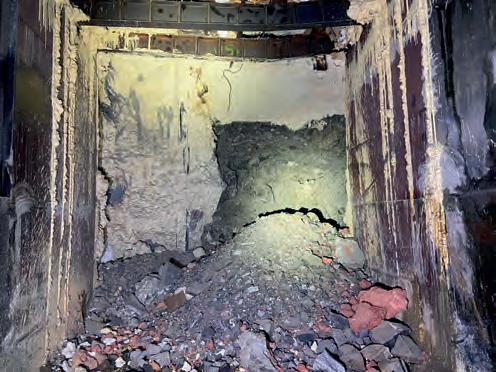
The 600 m3 cavity was filled in only eight hours, from a single point of injection, without exposing any of the mining personnel to an unsafe area. From there, the mine had to follow a strict excavation process consisting of excavating 1 m of gallery with fallen rocks and foams, and installing sets and shotcrete before excavating again. This process allows the mine to recover the gallery quickly without ever being exposed to further rock bursts, as the roof is now composed of foam.
The second collapse
As the roadway recovery on access A pursued, the mine continued development from access B. Unfortunately, the roof on access B collapsed as well. This time, the collapse was so big that the rock burst reached the cavity previously filled by Weber Mining on access A, leading to a completely collapsed area between the two accesses to be connected. Again, the gallery had to be evacuated by the mining personnel, and the Weber Mining team was commissioned for the roadway recovery. At this point, there was no way for the mine to give Weber Mining an indication of the size of the void, except that it was more than twice the first one, that the recorded height was 25 m, and that it had propagated to the right. Therefore, due to the voids’ sheer size and difficult access, an iterative process of cavity fills and excavation had to be implemented instead of a one-event cavity filling.
Under normal circumstances, a cavity can easily be filled with foam, even with a sole injection tub. This is because the foam sets and expands in two minutes, giving it time to migrate inside the cavity and fill any existing voids as the cavity is getting filled. However, due to the shape and size of this cavity, Weber placed two sets of injection tubes at different locations. Each injection tube was intentionally placed to ensure the optimum foam distribution inside the cavity.
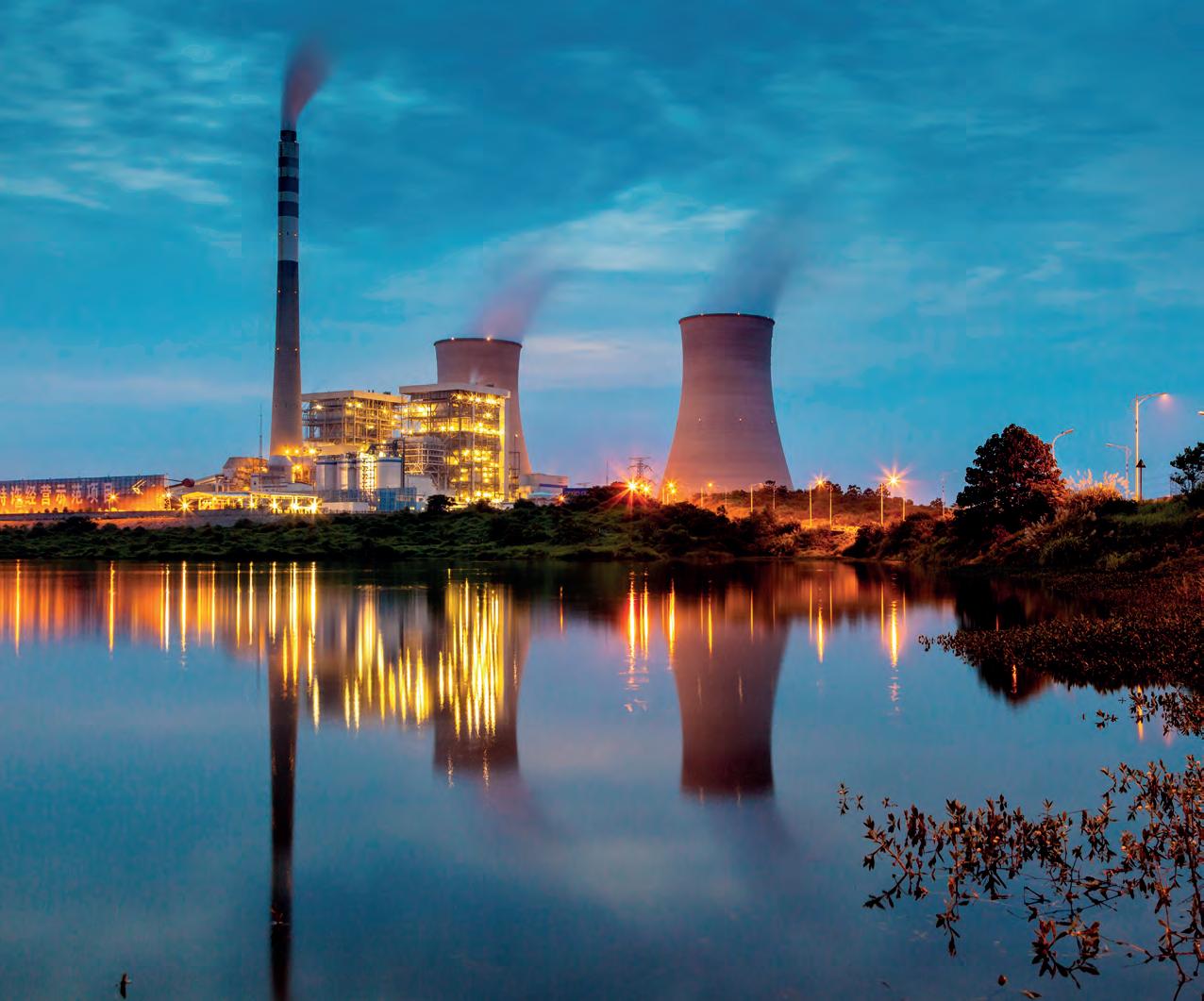




The first set of tubes were placed at the centre of the cavity, close to the top, while the second set was placed on the right side. Once placed, the first tube was connected to the hoses and the mixing gun. The mixing gun was then connected to the pump, and pumping started. This system
allowed for a safe and simple transfer from one injection tube to the next.
Foam calculations
Due to the cavity’s size and the ongoing rock fall, it was impossible to calculate the exact volume of foam required to ensure stabilisation. Given that Weber Mining Mexico has a local stock, they first came to the mine with an initial conservative quantity of resins. As it was clear that the cavity was bigger than assumed, more resin was supplied to the mine in less than 12 hours. With a 40 times expansion rate, the required resin quantity is reduced, as is the logistic requirement, ultimately easing the completion of the work.
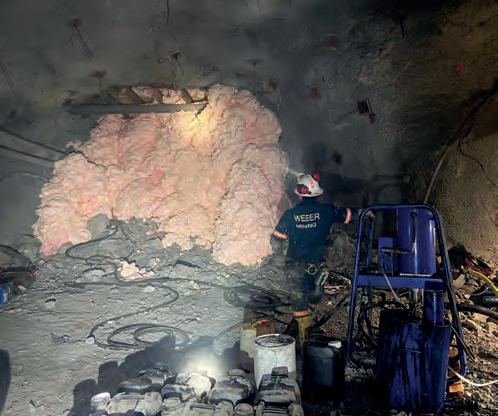
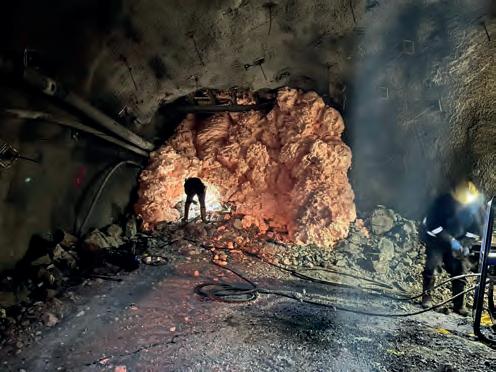
Roadway recovery, first eight sets
Once the first part of the cavity was filled, the excavation process began, following the same method used in access A. The mine excavated through the fallen rocks and foam, placing sets every meter, using shotcrete, before pursuing. After 8 m of excavation, the teams continued filling the remaining void using the same strategy. Given the resin consumption, a void volume of nearly 1500 m3 was estimated at the finish. The first injection lasted five hours, while the second had to take place over two shifts for 11 hours.
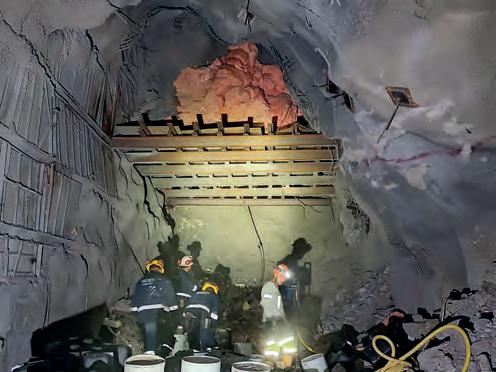
Initial evidence of the effectiveness of the stabilisation came from differential pressure gauge readings (pressure gauge rising is due to plugging of the hose/pipe after the nozzle and not because of the compression of the foam in the cavity: the compression of the foam is 0.03 MPa and the reading on the gauge ranges from 1 – 40 MPa – not precise enough to read the foam compression) and foam linking back toward the gallery as the cavity was filling. This was corroborated by direct observation and measurements underground by the mine operation teams when the mine started excavating the fallen rock, above which Weber Mining injected the foam and could place sets without difficulty and a stable foam roof.
Another aspect is the cavity filling secures the new sets in place by absorbing the energy of falling rock in case of further collapse from the top of the cavity. That means even if the cavity is not completely filled, the support of the gallery built by the sets is secured by the above foam canopy.
Conclusion
The two galleries were connected in approximately two months without incident, accident, or injury of any kind. The 30 m length of collapsed area between the two galleries is now protected by a foam roof, providing a safe and long-term roadway for heavy traffic between the mine’s underground offices and its newly developed mining area. It serves as the most fitting testament and legacy of the efficacy of the foam as an alternative to traditional cavity-filling products.
Success was achieved in the face of technical adversity. Even though the rock fall was ongoing, and the size of the cavity could have blocked access for months and caused lengthy delays, adherence to procedure and the use of specialised hardware facilitated a positive outcome.
Figure 4. Filling the roof to secure the roadway. Figure 5. Checking the expansion and compressive strengh.growing number of mining and cement companies worldwide are embracing surface miners to extract minerals and ores. These powerful machines offer several operational and business benefits over conventional methods like blasting, and are proving to be a good fit for an evolving mining industry.



For starters, surface miners can create inherently safer jobsites. They can reduce the need to transport, store, and handle dangerous explosives; and they reduce flyrock, a top safety risk when blasting.
Surface miners can also help mining companies improve environmental performance, a top priority for the industry today. Because the machines cut and crush rock in a highly controlled area, they greatly reduce noise, dust, vibrations and air-blast effects compared to blasting. This can help companies comply with increasingly strict environmental regulations, and reduce disruptions and disturbances to nearby communities.
Then there are the efficiency benefits. Blasting produces large rock fragmentation that requires additional post-processing, often in-pit hydraulic breaking and the use of expensive primary crushers. On the other hand, surface miners produce a consistently sized crushed material that is small enough to not require a primary crusher and can instead be directly conveyed out of the mining area.
As more companies roll out surface miners onto jobsites around the world, it is important that they use best practices for configuring, operating and maintaining the machines. Doing so can help keep the machines running at peak efficiency and help crews deliver the maximum tonnage possible every day on a jobsite, as well as protect machine uptime.
Steve Seabolt, Trencor, USA, presents five tips for maximising the productivity of surface miners and how they can usher in a new era of mining.
These best practices can be boiled down into five activities that are key to the success of every job.
1. Scout the jobsite
Maximising the productivity of surface miners begins long before the machines start pulverising rock. One of the most critical things to do prior to any job is scout the site to understand the ground conditions of the mining area.
Crews should take core samples from multiple locations throughout the jobsite. They can then evaluate the samples to identify the rock type, quality, strength, and structure –including the angle of layers if present, as well as the distance between fractures or layers. This will help determine what machine and machine configuration is needed for the job, in addition to the optimum cutting direction required to optimise production.
2. Select the right machine
Scouting a jobsite will help mining companies understand if they will need a larger, heavier, and more powerful
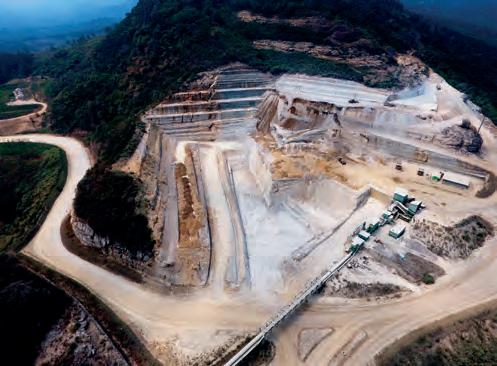
surface miner; or if a smaller, lighter, and less powerful option that is easier to transport could get the job done.
Mining locations with variable ore hardness, for example, require a heavier and more powerful surface miner that can more easily transition from soft to hard and more solid ore conditions. This can reduce the effects of shock load while limiting productivity loss. A heavy-duty and more robust surface miner will also remain more stable in the cut, and as a result endure less vibration and fatigue. This can help reduce maintenance costs and lengthen the surface miner’s operating life.
However, there is more to consider than size and power when selecting a machine, because not all surface miners are created equal.
For instance, some surface miners are hydraulically powered or belt driven, and some are mechanically powered and chain driven. Hydraulics provide a reliable way to transmit power, but they are less efficient because they involve the compression of fluids and experience pressure drops. A surface miner that builds up torque with a mechanical power train can deliver the higher torque that operators need to power through challenging ground conditions.
Companies should also understand what level of OEM support they will receive with their surface miner. Will the OEM provide trainers onsite at the mine – no matter where it is – to help operators get up to speed on proper machine use and servicing? Do they have parts and support available through a global dealer network? Do they offer a warranty for the first two years of the machine’s operation?
These are all important considerations that can ultimately affect uptime, especially at remote mines that are located hundreds of miles from the nearest city or airport.
3. Configure the machine for the job
Once a crew has scouted a jobsite and has the right surface miner model for the job, the next step is to set up the machine for the demands of the job. Surface miners have a wide range of drum and tooth configuration options for different ground conditions. Using the right configuration is key to helping the machine work as efficiently as possible.
A solid, heavy-duty mining drum is ideal for dense, harder rock, while a raiser type drum for increased fragmentation is better suited for softer and layered ore. Drums with raisers allow the teeth to stand off from the drum and can give the cut ore more room to pass through and be cleared out.
Surface miners can also be equipped with a wide range of options that can help companies manage risks and maximise productivity on the job. These options include a fire-suppression system, raised engine air inlet system, wireless maintenance remote, fast-fill fuel kit, and camera systems.

4. Properly operate the machine
Operating surface miners is all about managing speeds and feeds. Operators need to find the right balance between the speed at which they advance the machine’s ground drive and the speed at which they rotate the drum and crush rock to achieve optimal productivity. Go too slow, and they will not be as productive as they could be. Go too fast, and they risk driving into rock too quickly and stalling the machine.
Figure 1. Siam Cement Group relies heavily on surface miners for their limestone production.Today’s increasingly intelligent machines can also help operators maximise productivity. A surface miner can use a load-control system, for instance, to keep the engine under full load at all times. The system monitors engine RPM and controls the track speed to keep the engine loaded at the optimal point of the power curve for maximum power output and performance. As the engine load increases, the engine speed will drop slightly, and the load control will slow down the tracks to keep the engine from dropping below its peak power curve. If the engine load decreases, the engine RPM will start to climb, so the load control system speeds up the tracks to add more loads back to the engine.
5. Perform recommended maintenance
Proper routine maintenance can help keep surface miners functioning at peak performance and reduce the risk of unplanned downtime. Before taking any action, crews should read their machine’s operator manual. It will provide crucial information, such as general maintenance schedules for machine parts. Crews can then plan maintenance of those parts accordingly – whether it is cleaning the radiator and oil cooler after every 50 hours of machine use, or replacing the engine and transmission oil filters after every 500 hours of use.
Performing daily maintenance checks and tasks will also help keep machines in optimal working condition. For example, crews should inspect a surface miner’s teeth regularly throughout the shift to help maintain machine efficiency and protect the integrity of the digging assembly. If the carbide tip on a tooth is cracked, fractured or missing, crews should immediately replace it with a new tooth.
Finally, mining companies should know how technology on their surface miners can ease and reduce maintenance. An automated greasing system, for instance, automatically brings grease to all machine points that require daily greasing. This can free up operators by eliminating the need for them to manually do this daily. Telematics can also improve how companies maintain their surface miners. By accessing machine information through a web portal, companies can remotely monitor their machines, facilitate trouble shooting data processing, and improve the management and productivity of machines across jobs.
Case study: Surface miners help Siam Cement Group improve productivity
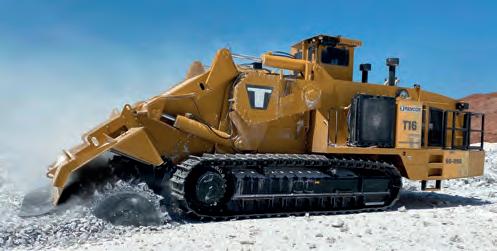
Siam Cement Group (SCG), a cement company from Thailand, first used surface miners in place of conventional drill and blast mining at a shale quarry adjacent to a road connecting neighboring villages. SCG management had decided that blasting was an unsafe option because of the proximity of the village populace, and that surface miners would be a cost-competitive solution while minimising environmental and social concerns.
Later, SCG again found itself facing environmental and social concerns in a limestone-exploration project at a new cement factory in Indonesia. One of the main issues was that the mining areas were located close to several villages, and increased governmental regulations made it difficult to receive a blasting permit for the area. Due to these issues, SCG decided that blasting was not an option.
Following the successful use of surface miners in Thailand, the SCG team determined that the machines would again be the best solution to reduce blasting concerns and environmental impacts for the nearby villages. What is more, the machine would still meet SCG’s production and cost targets.
The Indonesia project was carefully planned and designed to maximise use of the surface miners from the earliest stages of construction. First, the surface miners were used to create haul roads, level an area for a semi-mobile crushing plant, and cut a conveyor landing area with a 10.5˚ slope. Then, the machines were employed to open up the mining areas at various locations onsite to blend the limestone and achieve the desired quality.
Additionally, the mining areas were cut on grade through grade control for de-watering purposes. This is an ongoing requirement at the mine, because the area has a lot of heavy annual rainfall, especially during the lengthy monsoon period.
The cement factory in Indonesia has been in full operation since August 2015. With a capacity of 1.8 million tpy of limestone, the factory relies heavily on surface miners for its limestone production.
A new era in mining
New operating methods can be difficult to embrace, especially for mining companies that have operated the same way for decades. However, by following best practices, companies can make the transition to using surface miners a smooth one, and realise the many safety, environmental, and efficiency advantages that these machines offer.
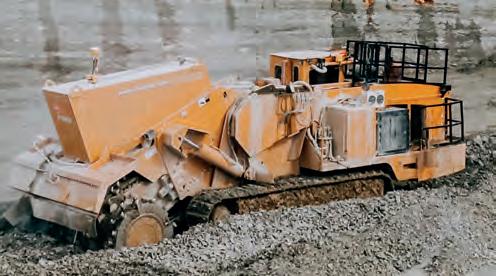 Figure 3. Surface miners offer several operational and business benefits over conventional methods like blasting, and are proving to be a good fit for an evolving mining industry.
Figure 3. Surface miners offer several operational and business benefits over conventional methods like blasting, and are proving to be a good fit for an evolving mining industry.



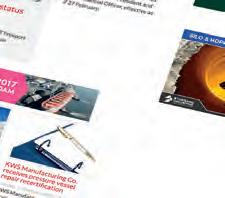









DEMANDING CONDITIONS DEMAND
JENNMAR
JENNMAR designs and manufactures a wide range of dependable ground control products, from bolts and beams to channels and trusses, resin, rebar, and more. We’re proud to make products that make the mining, tunneling, civil, and construction industries safer and more efficient.
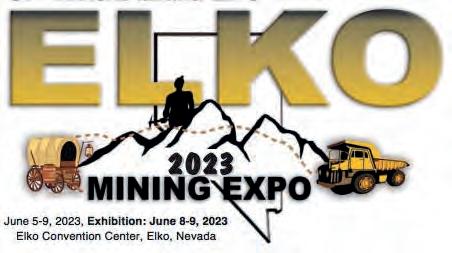

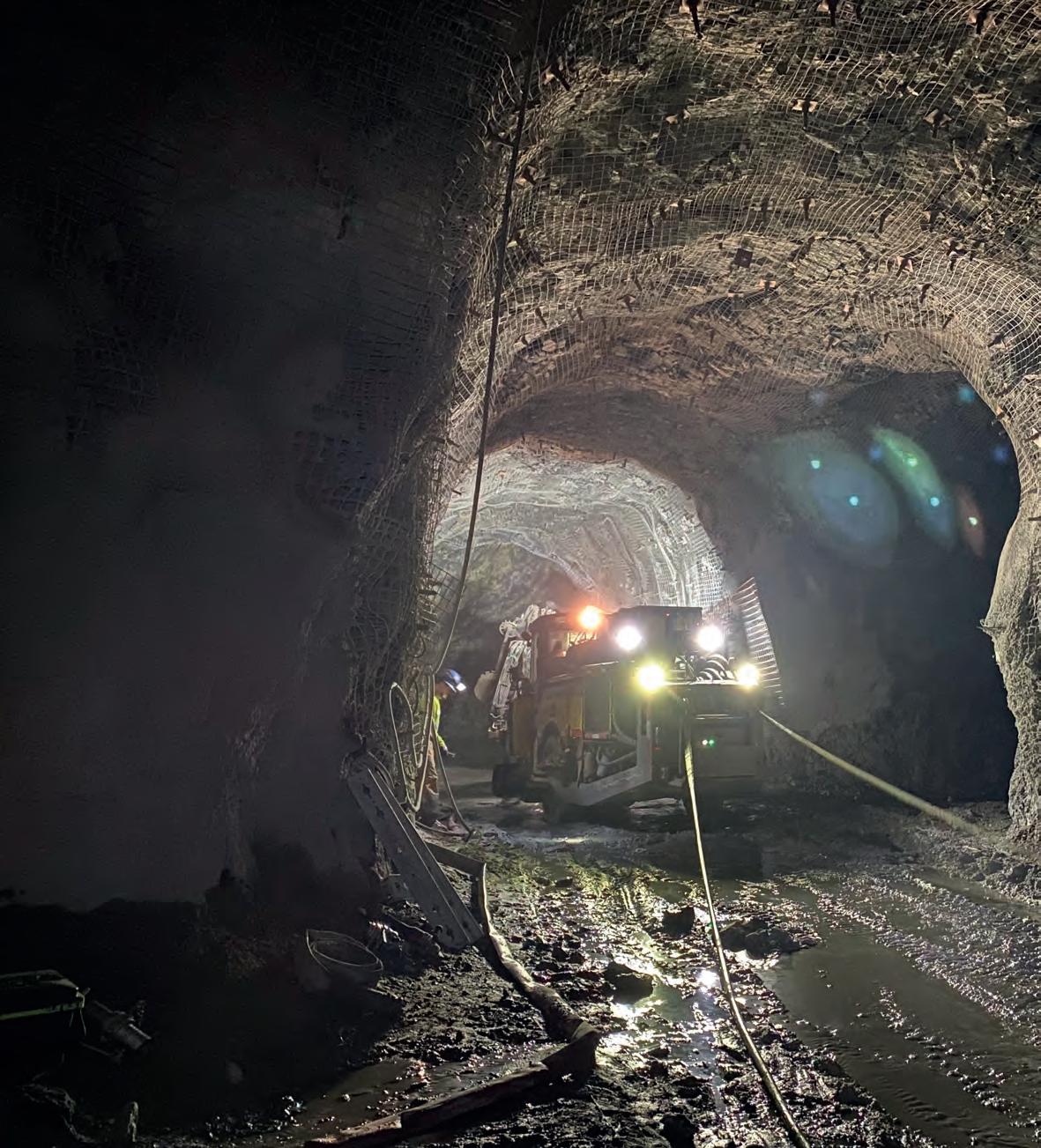
Because we understand the ever-changing and demanding conditions above and below ground we have built the richest portfolio of diverse and complementary brands. JENNMAR sets the bar in every industry we serve and as we continue to grow, our focus will always be on the customer.
We feel it is essential to develop a close working relationship with every customer so we can understand their unique challenges and ensure superior customer service. Our commitment to the customer is guided by three words: SAFETY, SERVICE, and INNOVATION. It’s these words that form the foundation of our business. It’s who we are.

For a complete list of our products and services, visit us at www.jennmar.com.



















JUNE 5-9, 2023

RECOVER MORE GOLD
Derrick continues to develop innovative, high-capacity, fine-screening equipment to advance gold processing. Our focus on reducing operational expenditure, engineering patented technologies like Trilogy™ Surface Technology, and minimizing maintenance and footprint help reduce the environmental impact of gold recovery. All of which contribute to a favorable return on investment.
YOUR COMPLETE GOLD PROCESSING SOLUTION

